Auburn In the News News
Auburn ranked by National Academy of Inventors among Top 100 U.S. universities granted utility patents
Auburn University has been ranked among the Top 100 U.S. Universities Granted Utility Patents in 2022, a list published recently by the National Academy of Inventors (NAI). The NAI is a member organization of U.S. and international universities and governmental and non-profit research institutes, with more than 4,000 individual inventor members and Fellows spanning more than 250 institutions worldwide.
With 12 new patents issued in 2022, Auburn was tied for 97th place on the list, created to highlight and celebrate American innovation and to recognize those universities that play a large role in advancing the innovation ecosystem within the U.S. and beyond. The NAI was founded in 2010 to recognize and encourage inventors with patents issued from the United States Patent and Trademark Office, enhance the visibility of academic technology and innovation, encourage the disclosure of intellectual property (IP), educate and mentor innovative students and translate the inventions of its members to benefit society.
“As a U.S.-based national academy, it is important to us not only to showcase innovation happening on the broader world stage, but here at home as well. Invention has been part of the American experience since the country’s inception, with intellectual property being protected in the constitution,” said Jamie Renee, executive director of NAI. “Innovation has always been at the heart of U.S. culture, and the Top 100 U.S. Universities list allows us to recognize and celebrate the commitment these universities have to the American tradition of invention and protection of IP.”
In addition to its inclusion on the Top 100 U.S. Universities list, Auburn has seen seven of its faculty members named as NAI fellows and one as an NAI senior member. The prestigious NAI fellows program honors academicians “who have demonstrated a spirit of innovation in creating or facilitating outstanding inventions that have made a tangible impact on quality of life, economic development and the welfare of society.” Current and emeritus Auburn faculty members who have previously been recognized as NAI fellows include Fa Foster Dai, J. David Irwin, Joseph W. Kloepper, John Weete, S.D. “Dave” Worley, Bruce Tatarchuk and the late Vitaly Vodyanoy.
Jin Wang, the first Auburn faculty member to be named a senior member, is the Walt and Virginia Woltosz Professor in Auburn’s Samuel Ginn College of Engineering. Wang’s research innovations center around effectively converting waste into value-added products. In particular, she focuses on using a novel microbial coculture to convert agriculture waste-derived biogas into bioplastic feedstock. This method has shown great potential to reduce greenhouse gas emissions and water and land pollution. NAI senior members are active faculty, scientists and administrators from member institutions who have demonstrated remarkable innovation-producing technologies that have had, or aspire to have, real impact on the welfare of society.

Categories: Auburn In the News
Auburn ranked in top 100 of U.S. research institutions for second straight year
For the second straight year, Auburn University is ranked in the top 11% of U.S. research institutions, coming in at No. 100 among 915 universities, according to the National Science Foundation’s most recent Higher Education Research and Development, or HERD, Survey.
Among public universities, Auburn is ranked No. 68 out of 412 institutions. The university also increased its research and development spending overall by $11.1 million in 2021.
“Auburn’s second year of ranking among the nation’s top 100 research institutions continues to be a significant accomplishment,” said James Weyhenmeyer, Auburn’s vice president for research and economic development. “Our researchers continue to be committed to engaging in impactful research—much of which is critical to supporting major Alabama industries—and that commitment is reflected in Auburn’s being highly ranked once again.”
The annual survey, compiled from fiscal year 2021 research expenditures, saw Auburn hold its position in the rankings’ top 100 even as 10 other SEC schools saw their positions fall. During the five-year period from 2017-21, Auburn’s annual research expenditures increased from $190.3 million to $266.4 million, resulting in a rankings jump of 14 places.
For universities without a medical school, Auburn again ranked No. 61 nationally and No. 1 in the state. Auburn also was highly ranked nationally in a number of specific fields of research, including No. 51 in engineering (up three spots), No. 53 in mathematics and statistics (up one spot) and No. 94 in physical sciences, all state bests. Auburn also ranked No. 41 for non-science and engineering research expenditures (up two spots). These fields include business administration, management, communications, education, humanities, social work and human sciences.
A hallmark of Auburn’s research is the diversity of its funded projects. Highlights include:
-
The U.S. Department of Agriculture recently awarded Auburn’s College of Forestry, Wildlife and Environment $2.1 million for studies into mitigating needle blight, a growing threat to pine trees. According to EDPA, the forest products industry is the state’s largest manufacturing industry. A second USDA award of more than $1.5 million is funding another study in the college aimed at reducing the effects of climate change through forest carbon sequestration.
-
The Auburn College of Agriculture’s Department of Poultry Science was awarded more than $1.2 million for research into sustainable poultry processing, as well as received additional funding of approximately $1.3 million for a study of the effects of environmental conditions in production efficiency and product quality in commercial poultry operations. Like forestry, poultry production is another major industry in Alabama. Alabama ranks fourth in the nation in broiler (chicken) production.
In addition to the high ranking in the NSF HERD Survey, Auburn is recognized by the Carnegie Classification of Institutions of Higher Education as a top-level, or R1, university with “very high research activity.”
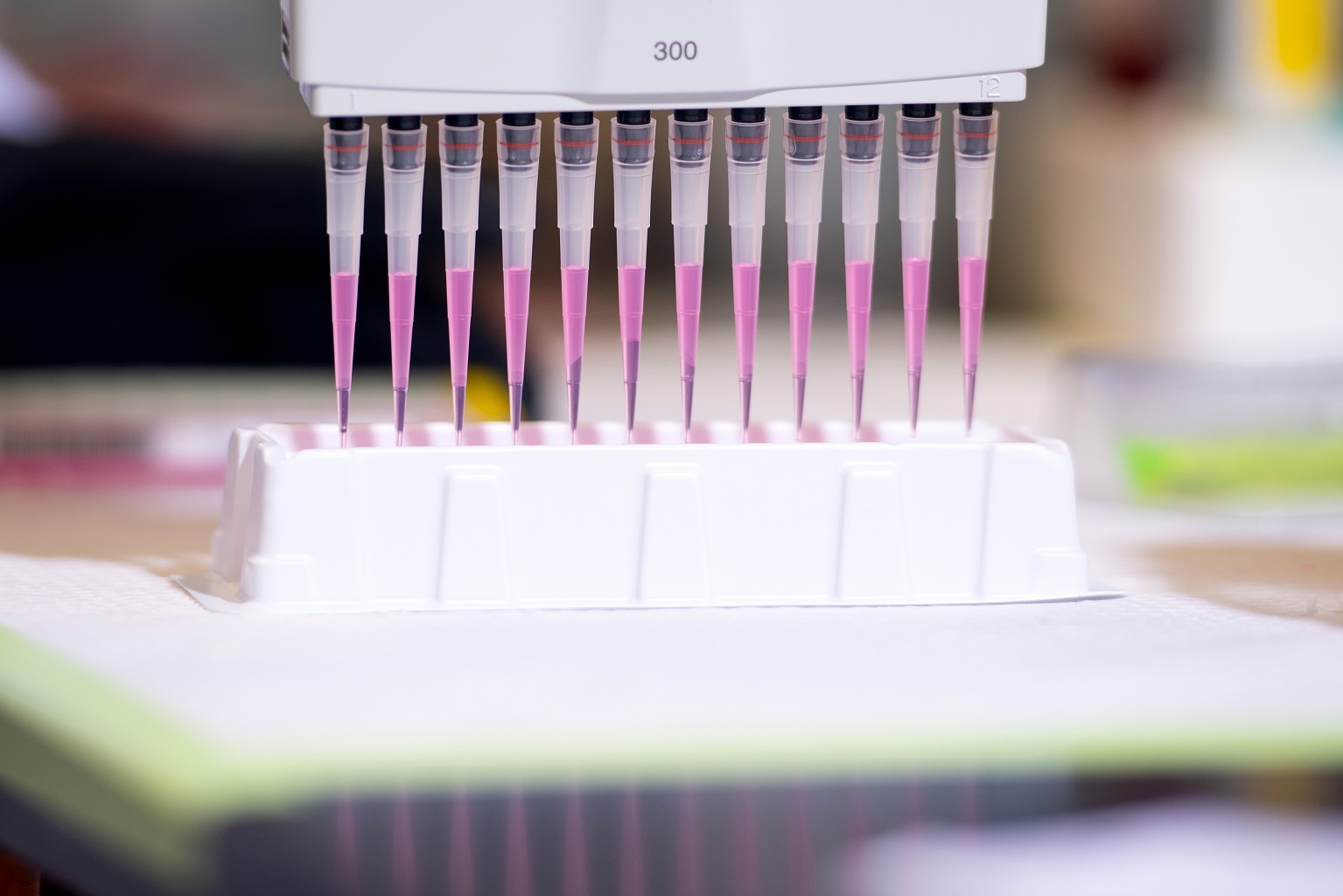
Categories: Auburn In the News, Science, Technology, Engineering and Mathematics (STEM), Food Systems, Engineering, Education, Agriculture, Liberal Arts
Auburn University ranks among top U.S. research institutions in National Science Foundation survey
Auburn University is ranked in the top 11% of U.S. research institutions, coming in at No. 100 among 915 universities, according to the National Science Foundation’s recent Higher Education Research and Development, or HERD, Survey. Among public universities, Auburn is ranked No. 67 out of 415 institutions.
“Auburn’s ranking among the nation’s top 100 research institutions is a significant accomplishment,” said James Weyhenmeyer, Auburn vice president for Research and Economic Development. “Our innovative researchers have remained committed to engaging in impactful research even during the challenges of a global pandemic. Their dedication and ingenuity are reflected in Auburn’s rise in the rankings.”
The annual survey, compiled from fiscal year 2020 research expenditures, saw Auburn climb five spots from the previous year.
During the five-year period of 2016-20, Auburn’s annual research expenditures increased from $152.4 million to $255.3 million, resulting in a rankings jump of 26 places. Among Southeastern Conference universities, Auburn had the highest percentage increase in research expenditures over that time period: a jump of 67.5%.
For universities without a medical school, Auburn ranked No. 61 nationally and No. 1 in the state. Auburn also was highly ranked nationally in a number of specific fields of research, including No. 54 in engineering, No. 54 in mathematics and statistics and No. 93 in physical sciences, all tops in the state.
A hallmark of Auburn’s research is the diversity of its funded projects. Highlights include:
- The Samuel Ginn College of Engineering’s National Center for Additive Manufacturing Excellence is working with NASA under a $14.6 million contract to develop additive manufacturing processes for improving the performance of liquid rocket engines. The center also is using $6 million from the Federal Aviation Administration to advance the use of additive manufacturing in commercial aviation.
- The state of Alabama recently awarded Auburn $1.6 million for four sustainability projects: advanced jet and diesel fuels from woody biomass grown in the state and from waste plastics; biotechnology that enables conversion of organic wastes into bioplastics; 3D printable polymer smart machines, such as actuators, sensors and energy harvesters; and a new, high-value aquaculture feed binder made from soybean hulls.
- The National Institutes of Health recently awarded Auburn a $1.5 million Research Training Initiative for Student Enhancement grant to broaden participation in the sciences for traditionally underrepresented students.
In addition to the high ranking in the NSF HERD Survey, Auburn is recognized by the Carnegie Classification of Institutions of Higher Education as a top-level, or R1, university with “very high research activity.”
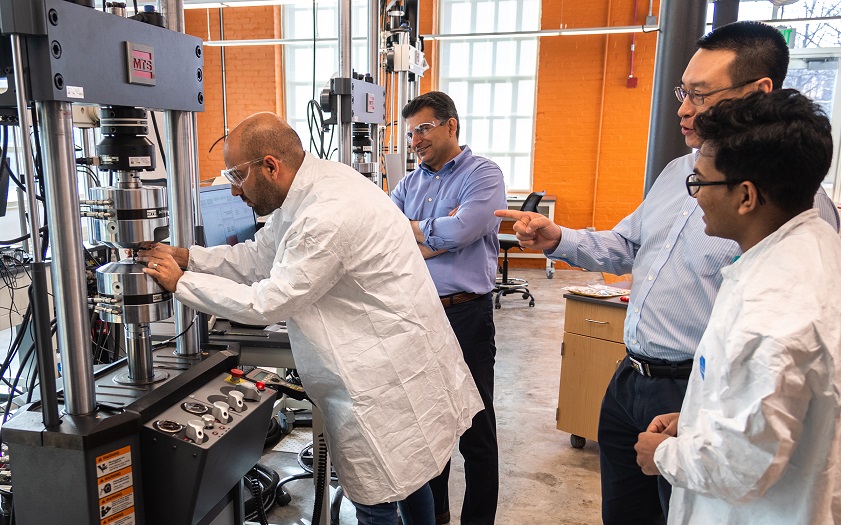
Auburn University is ranked in the top 11% of U.S. research institutions, coming in at No. 100 among 915 universities, according to the National Science Foundation’s recent Higher Education Research and Development, or HERD, Survey. Pictured, scientists in Auburn’s National Center for Additive Manufacturing Excellence conduct fatigue testing on an additively manufactured part.
Categories: Auburn In the News, Energy & the Environment, Engineering, Manufacturing, Advanced Systems, Agriculture
Auburn projects receive $1.6 million in latest round of state research development funding
Auburn University has been awarded $1.6 million in research grants from the state of Alabama through the Alabama Research Development and Enhancement Fund.
The grants, administered by the Alabama Department of Economic and Community Affairs, are earmarked for research and development of four different sustainability projects housed in the Samuel Ginn College of Engineering.
Of the $1,590,470 total awarded to Auburn:
-
$727,677 goes to research for producing jet and diesel fuels from woody biomass and waste plastics;
-
$294,008 goes to researching and assessing the economic feasibility of converting organic wastes into bioplastics;
-
$268,353 goes to conducting research involving polymer smart machines; and
-
$300,432 goes to developing soybean hulls as a means to keep aquaculture feed pellets in mass, resulting in less waste and more intake by farm-raised fish and shellfish.
The researchers include principal investigator Sushil Adhikari, professor and director of the Center for Bioenergy and Bioproducts, Department of Biosystems Engineering; principal investigator Peter He, associate professor, and co-principal investigators Jin Wang and Mario Eden, Department of Chemical Engineering; principal investigator Jason Clark, assistant professor, Department of Electrical and Computer Engineering; and principal investigator Zhihua Jiang, assistant professor and director of the Alabama Center for Paper and Bioresource Engineering Science, and co-principal investigator Burak Aksoy, Department of Chemical Engineering.
Summaries of the projects are as follows:
Title: Advanced Liquid Transportation Fuels from Co-Liquefaction of Forest Biomass and Waste Plastics
Investigator: Adhikari
The goal is to advance economic development in the state and nationally through reinvigoration of natural resource-based industries and to establish new industries based on advanced liquid fuels from woody biomass grown in the state and the waste plastics collected from cities. Woody biomass prevalent in Alabama will be co-liquefied with waste plastics using a pyrolysis technology, which will then be subjected to hydrogen treatment to produce jet and diesel fuels.
Title: A Novel Biotechnology That Converts Agricultural and Municipal Waste into Bioplastics
Investigators: He, Wang and Eden
Alabama is one of the top agricultural producing states in the U.S., with annual agricultural exports exceeding $1 billion. As a result, there is a significant amount of organic wastes produced in the state, and Alabama ranks 14th among all states in terms of biogas generation potential from organic waste through anaerobic digestion, or AD. These organic wastes represent an underutilized renewable feedstock for biofuel and biochemical production. This project aims at researching and assessing the economic feasibility of converting organic wastes into bioplastics. Specifically, the project will develop and optimize a prototype of a patent-pending biotechnology that enables the conversion of organic wastes into bioplastics, and to assess its technical and economic feasibility at scale through techno-economic analysis, or TEA.
In the proposed technology, a microalgae-methanotroph coculture will be cultivated in a novel patent-pending circulation coculture biofilm photobioreactor, or CCBP, to convert biogas (both methane and carbon dioxide) derived from organic wastes into microbial biomass while simultaneously recover chemicals from AD effluent to produce treated clean water. The produced mixed microbial biomass can be economically processed to produce high-value bioplastics that is in rising demand. The project will advance the progress of the patent pending biotechnology towards commercialization, which has potential to create many new jobs in the state of Alabama.
Title: Polymer Smart Machines
Investigator: Clark
This project aims to research and develop the foundational building blocks of “polymechatronics,” which will enable the realization of 3D printable polymer smart machines. The research includes designing, fabricating, modeling and characterizing piezopolymer versions of traditional active mechanical and electrical building blocks such as actuators, sensors, energy harvesters, energy storers and analog and digital circuit elements. Compared to traditional devices, polymer smart machines are expected to be less expensive, easier to manufacture, biocompatible, recyclable, use less energy, operate over a larger range of temperatures, offer new functionalities and be more environmentally friendly.
Title: A Novel and Sustainable Feed Binder from Soybean Hulls: Scale-Up Production and Evaluation
Investigators: Jiang and Aksoy
The goal is to establish a low-cost, high-value and novel compound feed binder from soybean hulls, a co-product of soybean processing for oil and meal production. The specific objectives of this project are: 1) to scale-up feed binder production to around 1.5 kg/hour and optimize process conditions for production; and 2) to scale-up shrimp feeding trials simulating shrimp farming operations at a commercial shrimp operation in west Alabama.
Successful completion of this project will establish a high-value and novel compound feed binder platform using 100% soy hulls that is ready for commercial scale productions and applications with significant economic and environmental benefits: It will significantly enhance competitive advantage of shrimp farmers in Alabama by reducing their feed costs. This will, in turn, improve employment opportunities in seafood farming and processing sector, making more local seafood and services available to the citizens of Alabama. In addition, it will also significantly improve water quality by reducing leached nutrients.
Auburn is among five Alabama universities and one research institution sharing in grants totaling $4.85 million, according to the announcement released recently by the Alabama governor’s office.
“Our universities and research institutions in Alabama truly impact the world, and I am proud to continue investing in the important work they are doing,” Gov. Kay Ivey said. “This $4.85 million is an investment in the future of Alabama and the future of research.”
BY MITCH EMMONS

Samford Hall
Categories: Auburn In the News, Energy & the Environment, Food Systems, Engineering, Agriculture
Auburn professors’ Selma ‘Bloody Sunday’ project gaining momentum through social media, public support
Auburn University professors Richard Burt and Keith Hébert are turning to social media and the Selma, Alabama, community for help in making progress on their “Bloody Sunday” research project.
The interdisciplinary tandem is enlisting a group of Auburn Honors College students to help expand the project’s reach to the social media realm, and they have established a Facebook page where visitors can connect and help identify marchers who participated in one of the seminal moments in civil rights history—Bloody Sunday on March 7, 1965, in Selma.
On that day, John Lewis, Hosea Williams and a group of approximately 600 marchers were confronted by Alabama State Troopers armed with tear gas and metal batons as they began a march for equality toward Montgomery. The nation watched in horror that night on ABC as marchers were pummeled by law enforcement in what became known as “Bloody Sunday,” an event that would serve as a catalyst for Americans across the country to rally behind the civil rights movement like never before.
The researchers are hoping the public can help distinguish the identities of the brave men and women who took part in the march that day.
“Social media platforms such as Facebook offer public historians invaluable tools to connect with multi-generational audiences across a broad geography,” Hébert said. “We have received critical information from former Bloody Sunday foot soldiers and their loved ones near and far as we build a comprehensive database of those marchers’ names and stories. Our Honors College students are gaining experience communicating with diverse audiences as we all come together to collect and celebrate the heroic sacrifices those foot soldiers made in Selma on March 7, 1965. Those learning opportunities will bode well for their future career endeavors as they help America build a diverse, inclusive and equitable society.”
In addition, Burt and Hébert have received considerable support from the Selma community, in particular the Selma City Council and Selma High School. City council members were briefed about the Auburn-led project at a recent meeting and have pledged their support and resources to aiding the endeavor’s success.
“Actually putting names to these faces is a game-changer,” Selma City Council Chairman Billy Young said. “We’re extremely enthusiastic about recording history this way, because for so long, these men and women who did so much never had their names provided. It means a great deal for Auburn and all the students and everyone to come together for this project.
“This project brings us back into the forefront in the fight for social justice that’s been taking place in Selma, and identifying these people this way is a great homage to Selma. We are gung-ho and really proud of the work that’s being done, and seeing everything unfold this way makes the city council feel even better about our support and makes us want to support it even more.”
The project also will be promoted with posters at the Selma Dallas County Public Library, and photos from that fateful day will be on display at a November photography festival in Selma thanks to the efforts of Bloody Sunday march participant JoAnn Bland, who identified herself in one of the historical images.
“I think it’s amazing, and I’m glad to be a part of it,” Bland said of the project. “That was the first time I’d seen a picture of me, and I don’t think the ordinary foot soldiers get the recognition for what we did. Our kids know about Dr. King and John Lewis, but they don’t realize ordinary people like me were out there fighting and didn’t give up.
“It makes the pictures come alive when you know [people’s] names, and they’re pictures that need to have captions and need to have names listed with them. So many people have been left out, and a lot of people around here have the blood of those history-makers running through their veins and they should know about them.”
Albert Turner Jr.—chairman of the Perry County Commission whose father, Albert Turner Sr., helped organize the march in 1965—applauded the team’s efforts.
“I think this will be the most accurate depiction of Bloody Sunday that has ever been documented,” said Turner. “It will speak to the core of the people who were there on Bloody Sunday, the march that changed America. The civil rights movement was built by everyday people who felt the sting of segregation and being treated as second-class citizens, and those were the people who rallied together on Bloody Sunday, which was the most revolutionary act of defiance since the Civil War.
“I think this project is going to help give Perry County the national recognition it deserves for its role in the foundation of Bloody Sunday, and more than 50 percent of the marchers were from Perry County. This project that Auburn University is doing will help bear witness to Perry County and its dominant role in Bloody Sunday.”
Selma High School teacher Veronica Pitts has even enlisted her AP History class in helping advance the project, particularly working on the social media component and enlisting family members to help identify Bloody Sunday marchers. Pitts was first introduced to the cause of identifying marchers while working for the National Park Service prior to becoming a teacher, so this project is a chance to rekindle a passion project from her past.
“I’m excited to be able to share this project with my class,” said Pitts, a Selma High School alumnae who has nearly 30 students in her class. “The biggest thing has been trying to convince them to get some of their grandparents to assist us in this process in identifying some of those foot soldiers. When this opportunity presented itself, it made my heart sing because I had an opportunity to get back to some work I’d done nine or 11 years ago.
“We’re excited to get the ball rolling and see how much we can get done this semester and the rest of this year.”
Burt—who also has set up a workroom for students to utilize for the project in Dudley Commons on campus—and Hébert have been energized and are immensely appreciative of the wave of support the research venture has garnered this year.
“The project is really starting to come together now,” said Burt, the McWhorter Endowed Chair and head of the McWhorter School of Building Science in the College of Architecture, Design and Construction, who has worked for years to survey and map the area where the historic confrontation occurred. “We have set up a workroom in the exhibition space of the College of Architecture, Design and Construction in Dudley Hall. The space is open during regular working hours, and folks are free to come visit to see how the project is progressing.”
The project recently received another boost when it was chosen to receive a nearly $190,000 grant by the National Endowment for the Humanities, or NEH, to support a pair of week-long workshops to include 72 K-12 educators in field studies that focus on the significance of Selma in the early days of the civil rights movement. Those workshops will be led by Hébert and his fellow Department of History colleague Elijah Gaddis, and their team members also include Junshan Liu, CADC, Leslie Cordie, College of Education, Meghan Buchanan, College of Liberal Arts, and Danielle Willkens of the Georgia Institute of Technology, and the team also is working with faculty from Alabama State University.
The overarching hope for the project is to identify as many Bloody Sunday participants as possible and, therefore, perhaps better understand the crucially important civil rights event while also elevating Selma’s status as a historical site.
“Our project highlights the need for additional historical research and documentation for one of the most famous moments in American history,” Hébert said. “By taking a fresh look at Bloody Sunday, our research has revealed rich details about how the march unfolded that prior historians have overlooked. We intend to help those in Selma who want to do more to preserve and interpret the historic landscapes connected to this seminal event.
“Today, the historic conflict site is in dire need of historic preservation and interpretation. Hopefully, we can build a coalition to save this historic site before it is too late.”
BY NEAL REID
.jpg)
The Selma, Alabama, community has come together with Auburn University researchers to help identify marchers from the 1965 Bloody Sunday incident. From left to right, Rachel Metcalf from the City of Selma, marcher JoAnn Bland, Selma Times reporter James Jones and Selma Public Library Director Becky Nichols recently met up to look at historic photos. Bland identified herself in one of the photos for the first time thanks to the project.
Categories: Auburn In the News, External Engagement, Liberal Arts
Auburn University researcher ranked among the world’s most influential climate scientists
Within its recent ranking of the world’s most influential climate scientists, the international news agency Reuters has named Hanqin Tian, professor in Auburn University’s School of Forestry and Wildlife Sciences, one of the world's top scholars leading the study of climate change.
Tian, who serves as the Solon and Martha Dixon Endowed Professor and director of the International Center for Climate and Global Change Research, was ranked 118th out of 1,000 international scientists. Known as a preeminent scholar of global environmental change, Tian also leads Auburn’s Climate, Human and Earth System Science (CHESS) Cluster, an interdisciplinary group of faculty working to advance solutions to persistent environmental challenges.
“Dr. Tian’s contributions to the study of climate systems continue to advance solutions to many of the grand challenges facing our society, including protecting natural resources and developing environmentally sustainable solutions,” said Auburn Provost Bill Hardgrave. “His exemplary record of research and scholarship certainly makes him one of the most influential scholars in the field.”
Two of Tian’s former graduate and postdoctoral fellows, Chaoqun “Crystal” Lu and Wei Ren, also are included on the list.
To compile the list, Reuters data journalist Maurice Tamman developed a system of identifying and ranking climate academics according to the influence of their research. Examining more than 350,000 scholarly papers, Tamman’s criteria included evaluating the number of publications as of December 2020, the frequency of those citations relative to other papers in the field and the number of references in the press, social media and other public policy papers.
Tian’s groundbreaking research findings in the field of climate science have been featured in over 300 publications, including 10 papers published in the most prestigious scientific journals: Nature, Science and Proceedings of the National Academy of Sciences, or PNAS. Tian’s Nature paper, “A comprehensive quantification of global nitrous oxide sources and sinks,” made the Altmetric Top 100 most discussed article out of 3.4 million works in 2020 and was featured in 134 news outlets globally.
In 2019, Tian received a prestigious Andrew Carnegie Fellowship to support his work in climate change and food security. Tian was also elected as a fellow to the American Geophysical Union, or AGU, in 2020 for his outstanding and pioneering contributions to understanding the role of terrestrial ecosystems in controlling sources and sinks of greenhouse gases. AGU elects fewer than 0.1% of members to join this prestigious group of fellows.
Tian has co-led an international consortium of scientists from 48 research institutions in 14 countries under the umbrella of the Global Carbon Project, on which he serves as one of 12 scientific steering committee members and co-chair for the International Nitrous Oxide Assessment.
“International collaboration is essential for solutions to global climate change and sustainable development goals,” said Tian. “Therefore, strengthening partnerships for international research and education is of critical importance to Auburn University’s global profile and ranking.”
In the past decade, Tian has trained and prepared young scientists, including more than 10 doctoral students and postdoctoral fellows who have become faculty members across the United States, such as the two who also made the Reuters list: Lu, currently an assistant professor at Iowa State University’s Department of Ecology, Evolution and Organismal Biology, and Ren, now an assistant professor in the Department of Plant and Soil Sciences at the University of Kentucky.
“Lu and Ren had a decade-long training and research experience in climate science at Auburn, initially as graduate students, postdoctoral and then research fellows before they assumed faculty positions,” said Tian. “Both received NSF CAREER awards, the most prestigious award in support of early-career faculty.”
Janaki Alavalapati, dean of Auburn’s School of Forestry and Wildlife Sciences, said the U.S. administration acknowledges the growing need for climate scientists and initiatives relating to academics, research and outreach.
“With global recognition of Auburn’s unique strengths in climate science, Auburn is well-positioned to engage and lead some of these emerging sciences,” said Alavalapati. “To extend the intellectual reach of Auburn University at regional, national and international scales, it would be strategic and timely to facilitate a conversation to explore avenues to strengthen and expand AU’s climate science platform.”
BY TERI GREENE
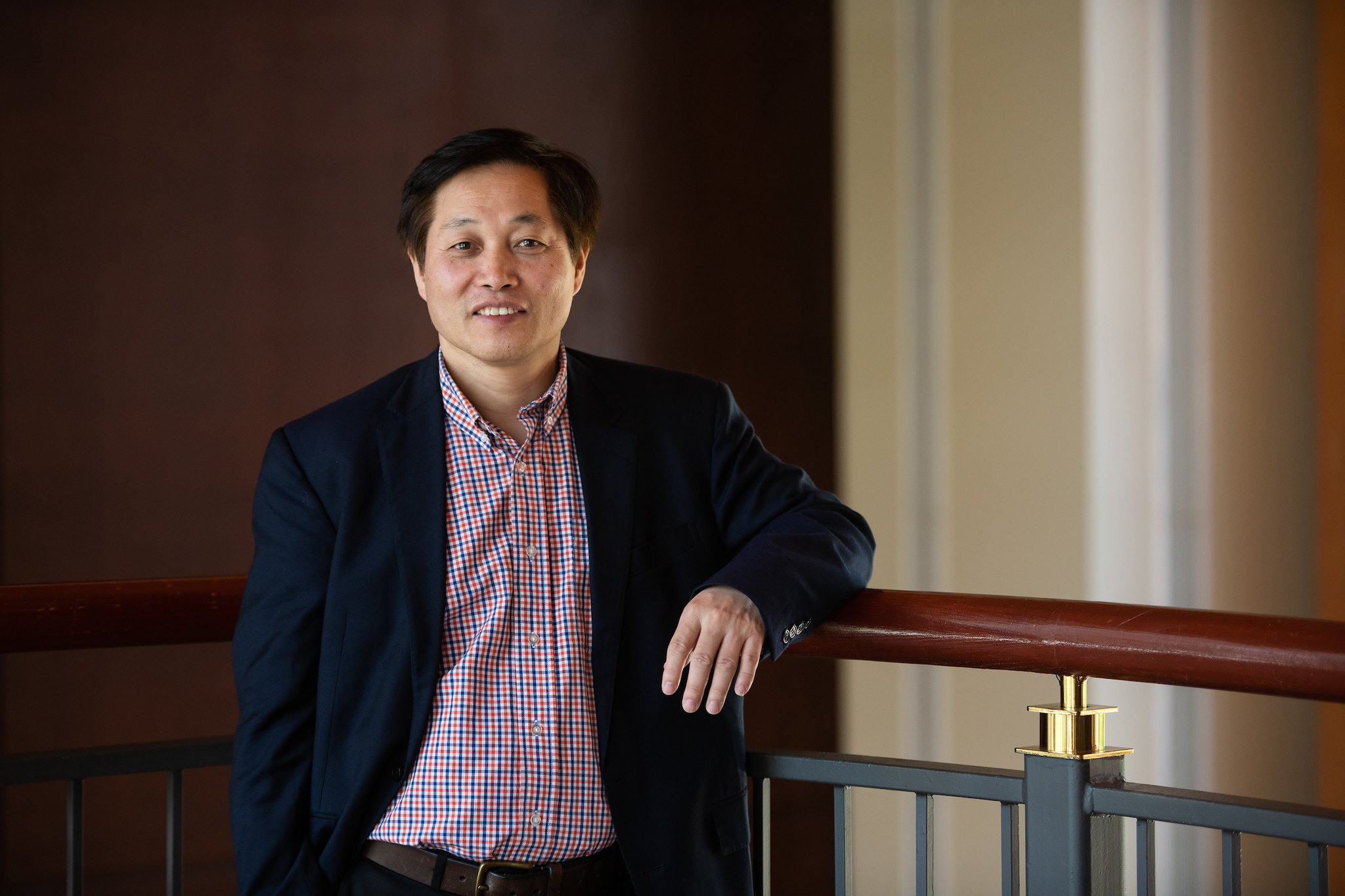
Reuters has named Hanqin Tian, Auburn University’s Solon and Martha Dixon Endowed Professor and director of the International Center for Climate and Global Change Research, to its list of top scholars leading the study of climate change.
Categories: Auburn In the News, Energy & the Environment
Auburn University senior named Barry M. Goldwater Scholar
Auburn University senior Shelby Wales is now a Barry M. Goldwater Scholar, an honor bestowed on only 410 students nationwide this year. The scholarship is widely considered the most prestigious award in the United States for undergraduates in science, technology, engineering and mathematics.
Wales, originally from Sylacauga, Alabama, is majoring in chemical engineering in the Samuel Ginn College of Engineering and minoring in supply chain management in the Raymond J. Harbert College of Business. Wales was chosen from a field of more than 5,000 college students.
Her research investigates different pathways of implementing 3D printing to investigate geochemical reactions. Wales hopes that, by producing 3D printing models of real rock structures that possess the same reactive properties, further insight may be obtained about the geochemical reactions that occur in conjunction with carbon capture and sequestration.
“I think the community of Goldwater Scholars I have already been connected to will be immensely helpful as I continue learning and begin my career,” Wales said. “I am incredibly honored to have been selected for this scholarship, and I hope it will put me in a position to continue doing work I enjoy with incredible people.”
While Wales spends multiple hours in the lab, she also finds time to participate in a variety of campus organizations, as well as win numerous accolades for her academic success. She was awarded the 2020-21 Undergraduate Research Fellowship; is a member of Alpha Omega Epsilon, Omega Chi Epsilon and Tau Beta Pi honors societies; and has made the Samuel Ginn College of Engineering Dean’s List multiple times.
“I feel so fortunate for the support of peers, mentors and family that surround me,” Wales said. “The Goldwater Scholarship is an individual award, but I have not been alone throughout my undergraduate and research experience.”
Wales noted that Assistant Professor Lauren Beckingham in the Department of Civil and Environmental Engineering has supported her research interests and personal academic journey from the time Wales joined Beckingham’s research group in spring 2019.
“The open, collaborative environment fostered in our research group has been formative toward my perception of the value of scientific research,” Wales said.
During Wales’ internship with Southern Company, Nick Irvin, director of research and development, strategy, advanced nuclear and crosscutting technology, and Lauren Lathem, principal research engineer, continuously prompted her to be intentional and objective when conducting research.
“Their guidance has allowed me to think creatively about the way research is conducted, so that the best solution, or the right solution, can be found,” Wales said.
Alex Sauer, fellowship advisor for Auburn’s National Prestigious Scholarships Program and the Goldwater campus representative, said, “The Goldwater Scholarship is the preeminent undergraduate award of its type in the fields of mathematics, the natural sciences and engineering. We look forward to great things from Shelby and commend her faculty mentors for the pivotal role they have played in her success.”
The Barry M. Goldwater Scholarship Program was established to provide scholarships to outstanding students who intend to pursue careers in mathematics, natural sciences and engineering. Each scholarship covers eligible expenses up to a maximum of $7,500 annually for undergraduate tuition, fees, books and housing.
In awarding scholarships, the foundation considers the nominee's field of study and career objectives, along with the extent to which that individual has the commitment and potential to make a significant contribution to the field of science or engineering.
The National Prestigious Scholarship office at Auburn University, located in the Honors College, works closely with students to identify and help them pursue prestigious scholarships and other national and international awards through informational sessions and one-on-one support during the application process. For more information, contact Alex Sauer at ras0046@auburn.edu.
BY WADE BERRY
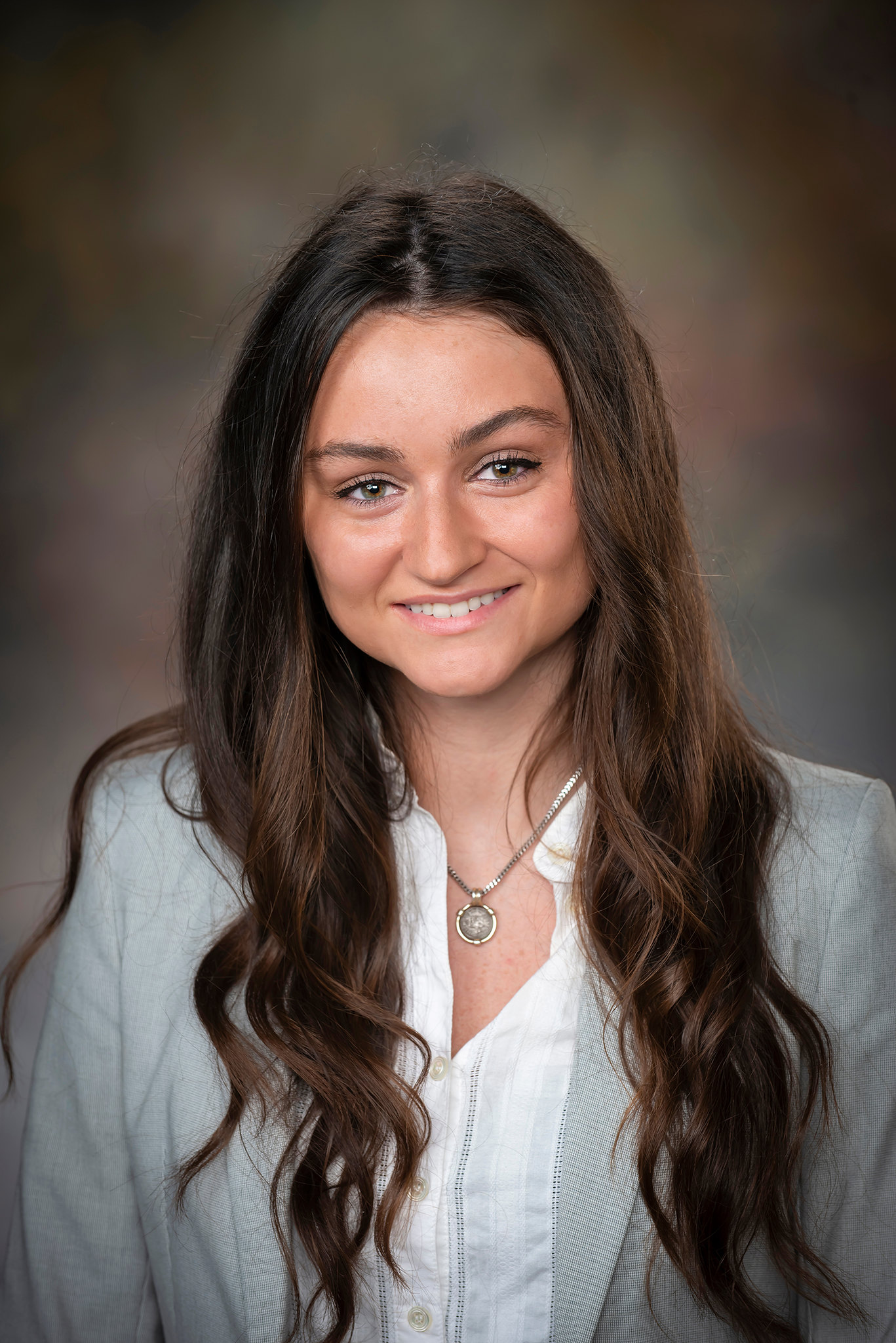
Auburn University senior Shelby Wales is now a Barry M. Goldwater Scholar, an honor bestowed on only 410 students nationwide this year.
Categories: Auburn In the News, Science, Technology, Engineering and Mathematics (STEM), Engineering, Undergraduate Research
SEC’s Auburn Faculty Achievement Award presented to child development researcher and sleep expert Mona El-Sheikh
Auburn University College of Human Sciences professor and world-renowned sleep expert Mona El-Sheikh has been named the recipient of the Southeastern Conference’s 2021 Faculty Achievement Award for Auburn, announced today by the SEC.
El-Sheikh, the Leonard Peterson & Co. Professor in the college’s Department of Human Development and Family Science, will receive a $5,000 honorarium from the SEC, and she becomes Auburn's nominee for the SEC Professor of the Year, who will be selected from 14 nominees representing SEC universities.
“Dr. El-Sheikh has profoundly expanded our knowledge of childhood development and adolescence, and in doing so, personifies Auburn’s mission of discovery and innovation,” said Bill Hardgrave, Auburn’s provost and senior vice president for academic affairs. “With a remarkable body of research and continued commitment to student success, she embodies what it means to be an extraordinary teacher and scholar.”
The SEC Faculty Achievement Awards, created to recognize faculty accomplishments, scholarly contributions and discoveries, were established by SEC presidents and chancellors and are administered by the SEC provosts. The awards were first presented in 2012.
Each recipient of the SEC Faculty Achievement Award must be a full professor at an SEC university, have a performance history of extraordinary teaching and a record of scholarship that is recognized nationally or internationally.
“I am honored and delighted to be chosen for this award, and I want to share credit with my colleagues, lab staff, graduate students and postdoctoral trainees, present and past, and the participating families, all of whom have been invaluable in my highly collaborative research,” said El-Sheikh, who received her master’s and doctorate in developmental psychology from West Virginia University. “I also wish to thank many administrators, present and past, at the department, college and university levels for their roles in supporting my research and facilitating its progress.”
Sleep may be the area El-Sheikh is best known for, but her research is transdisciplinary and concerns child and adolescent functioning in family and socioecological contexts and health disparities associated with poverty and race/ethnicity.
Collaboration with departmental colleagues, as well as those around campus, has been key for El-Sheikh, who said it has led to a body of knowledge, some of which can now be translated to real-world applications for the betterment of youths’ growth and development, and to addressing persistent and longstanding racial/ethnic and social class disparities.
El-Sheikh initially became interested in child development as an undergraduate student at The American University in Cairo in her native Egypt. Over the years, her interest grew as she incorporated questions from other disciplines, including pediatric sleep medicine, psychophysiology and racial/ethnic health disparities, leading to her current scholarship.
She has spent her entire academic career at Auburn, arriving on the Plains in 1990 after receiving her doctorate.
Of particular emphasis in El-Sheikh’s work is the assessment of youths’ physiological and biological reactivity and regulation examined through the autonomic nervous system and sleep regulation, which are examined as primary mechanisms of risk and vulnerability/protective factors. She said that these assessments have yielded discoveries about how early physiological reactivity and regulation establish risk for later outcomes in psychological adjustment, physical health, cognitive functioning and academic achievement.
“My goal all along has been to determine some factors that are responsible for health, educational and emotional outcomes in children and youth so that early detection, prevention and intervention can reduce the prevalence of those problems,” explained El-Sheikh. “The studies have resulted in discoveries that emphasize children’s sleep as a crucial determinant of health outcomes.
“Children who sleep well are better able to regulate their emotions, perform better academically and have better health in general. Moreover, the studies have led to the discovery that disparities in outcomes by social class are ameliorated when sleep is consistently sufficient over the course of childhood and youth.”
El-Sheikh’s work has been continuously funded by the National Institutes of Health and/or the National Science Foundation since 1996. She has also received support with internal grants from Auburn and the Alabama Agricultural Experiment Station.
El-Sheikh mentors many postdoctoral fellows and graduate students and collaborates with them on her research. Many undergraduate students from across campus work in her sleep lab and are trained in complex data collection protocols.
Her extensive list of awards includes Auburn’s Creative Research and Scholarship Award and the Research Advisory Board Advancement of Research and Scholarship Award. She is also a fellow in the Developmental Psychology Division of the American Psychological Association.
BY AMY WEAVER
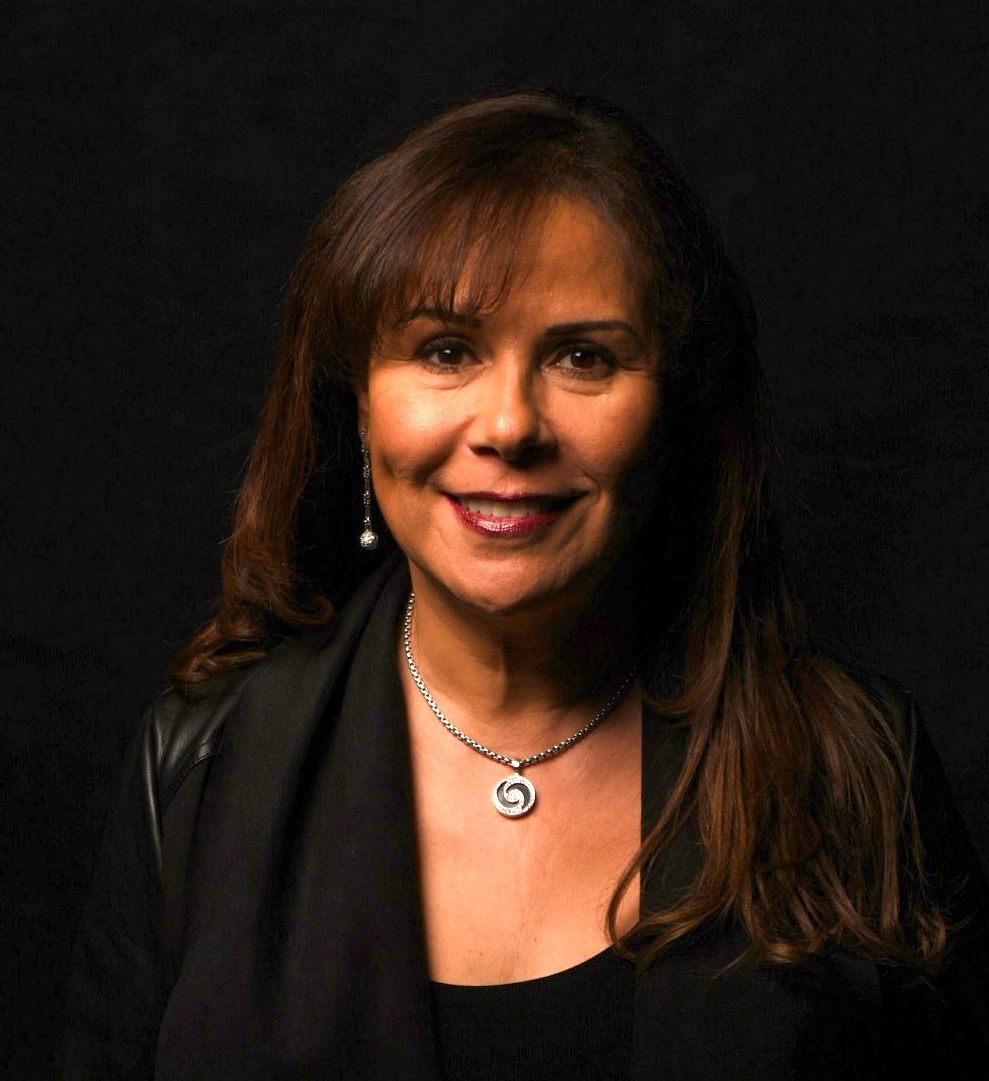
Mona El-Sheikh, the Leonard Peterson & Co. Professor in Auburn University’s College of Human Sciences, has been named the recipient of the Southeastern Conference’s 2021 Faculty Achievement Award for Auburn.
Categories: Auburn In the News, Health Sciences
Auburn University climbs in NSF’s ranking of research institutions
Auburn University has risen in the rankings of research universities nationwide, according to the National Science Foundation’s recently released Higher Education Research and Development, or HERD, survey.
Auburn rose from No. 110 to the No. 105 position with $232 million reported in research expenditures for fiscal year 2019. The performance contributes to Auburn’s continued ranking as an R1 research institution with “very high research activity” in the Carnegie Classification of Institutions of Higher Education.
NSF’s HERD survey rankings are published a year behind data collection, explained Martha Taylor, Auburn assistant vice president for research.
“Given our position in fiscal 2019 rankings, our estimates for fiscal 2020 and the average growth over time of some of our peers, we hope to move into the top 100 with the next HERD data release, which will not be available until late in calendar year 2021,” Taylor said.
In fiscal 2019, Auburn moved ahead of a number of universities that previously ranked higher nationally, and, among its 14 peer universities in the Southeastern Conference, Auburn is among six that rose in the rankings, with six dropping and two remaining where they were.
“When comparing Auburn to peer institutions in the HERD rankings, it is important to consider the differences in total expenditures related to medical school research,” Taylor said. “If you remove the medical school expenditure data, Auburn comes in at No. 68 in the national rankings. This viewpoint shows Auburn as the highest ranked university in the state of Alabama.”
“We are very encouraged by Auburn’s continuing upward climb in the NSF HERD rankings,” said James Weyhenmeyer, Auburn vice president for research and economic development. “At No. 105, Auburn is the second highest ranked institution in the state of Alabama. This is truly a testament to the Auburn faculty who have continued to respond with cutting-edge research during what has been by any measure a very challenging year.”
The HERD data allows university leadership to compare the institution to its regional or aspirational peers using common metrics. Auburn has participated in the HERD survey for more than 30 years and has moved up and down the rankings. However, over the past five years, Auburn has consistently shown an average 10 percent growth annually and holds the third highest growth rate in 2019 among its SEC peer institutions in research expenditures. Auburn consistently performs well in the life sciences and engineering fields and maintains consistency in several other reporting categories.
HERD is the primary source of information on research and development expenditures at U.S. colleges and universities. The survey collects information on research and development expenditures by field of research and source of funds, and also gathers information on types of research, expenses and numbers of personnel involved in research and development activities at these institutions.
BY MITCH EMMONS
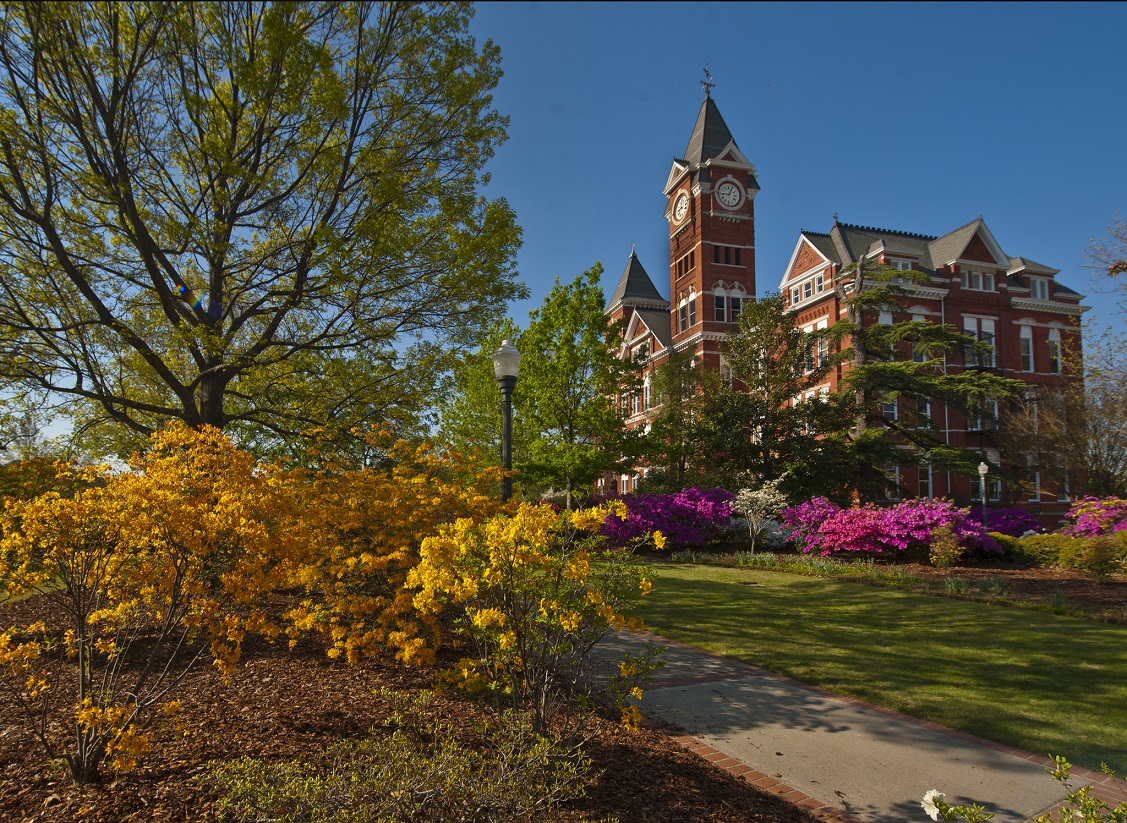
Categories: Auburn In the News
Auburn University research projects among recipients of $2.57 million state award
Two Auburn University research projects are among the recipients of a $2.57 million award by the Alabama governor’s office to five of the state’s research institutions, Gov. Kay Ivey announced recently.
Brian Via and Beatriz Erramuspe, director and research fellow, respectively, of the Forest Products Development Center in the School of Forestry and Wildlife Sciences, were awarded $247,142 to research development of a paper-based device for a cost-effective method to detect dangerous formaldehyde emissions in wood panels.
Sabit Adanur, professor in the Department of Mechanical Engineering in the Samuel Ginn College of Engineering, was awarded $75,374 to conduct research relating to the design, fabrication and testing of novel medical face masks to prevent the spread of COVID-19 or future contagious viruses.
The grants are from the Alabama Research and Development Enhancement Fund, or ARDEF, a state-funded program created in 2019 under the Alabama Innovation Act and administered by the Alabama Department of Economic and Community Affairs, or ADECA.
The funding provides support and encourages new and continuing research that will result in products and services to improve the lives of Alabamians either from the products themselves or from new job opportunities.
“This funding from the Alabama Research and Development Enhancement Fund will help Auburn researchers continue to solve real-world problems through discovery and innovation,” said James Weyhenmeyer, Auburn’s vice president for research and economic development.
“The research being performed at our universities and institutions offers strong evidence that innovation is alive and well in Alabama," Ivey said when making the announcement. “These grants will help provide the needed resources to bring even more ideas and research to light, eventually resulting in new products and new job opportunities.”
Other institutions named in the award announcement include the Basham Institute of Science in Dadeville, Alabama, and various campuses of the University of Alabama. This is the second round of ARDEF funds awarded in this program in 2020.
Ivey earlier this year awarded $2.27 million in grants to state research institutions and programs. Three Auburn research projects were recipients in that earlier announcement.
BY MITCH EMMONS
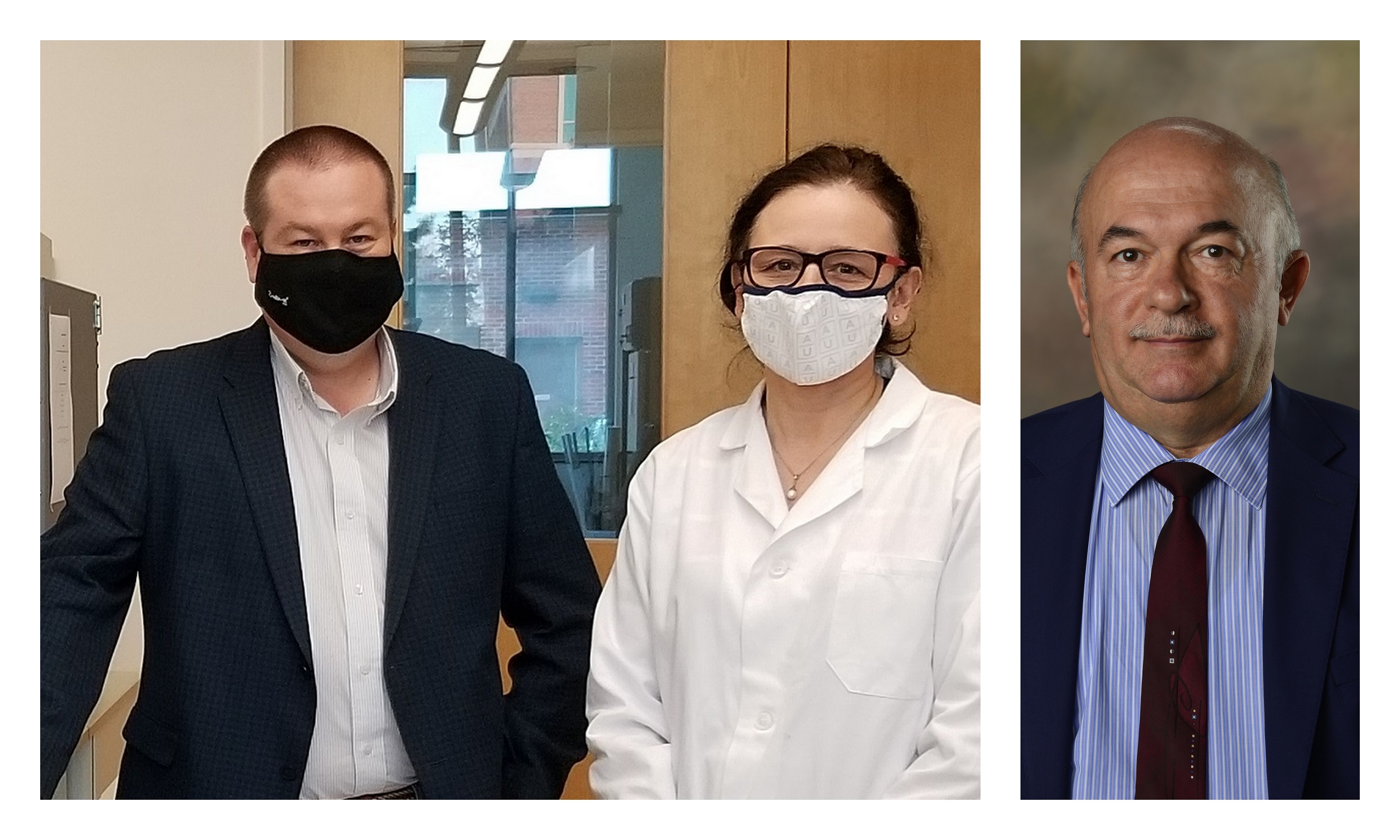
From the left: Brian Via, Beatriz Erramuspe and Sabit Adanur
Categories: Auburn In the News, Health Sciences, Engineering, Manufacturing
Auburn University awarded $1.31 million in research project funds from state of Alabama
Three Auburn University research projects have received a combined $1.31 million award, through a new program administered by the Alabama Department of Economic and Community Affairs, or ADECA.
Gov. Kay Ivey announced the grants this week through the new Alabama Research and Development Enhancement Fund. The state-funded program was created in 2019 under the Alabama Innovation Act.
The multidisciplinary projects are funded as follows:
-
$245,865 to develop an advanced biosensor using forest and agricultural products that will have a wide variety of uses dealing with contaminant detection, like determining if pesticides are present in water. The project is conducted by Samuel Ginn College of Engineering faculty members Virginia Davis, Alumni Professor, and Robert Ashurst, the Uthlaut Family Associate Professor from the Department of Chemical Engineering; and Soledad Peresin, an assistant professor of forest biomaterials in the School of Forestry and Wildlife Sciences.
-
$868,145 to develop a lightweight material that blocks mosquito bites while retaining coolness in hot weather. The research is being done by John Beckmann, an assistant professor in the Department of Entomology and Plant Pathology in the College of Agriculture.
-
$193,960 to develop a filtering process to remove perfluoroalkyl and polyfluoroalkyl substances from water and landfill runoff. The manmade substances are used in food packaging, stain repellants, cookware and firefighting foam and do not readily break down. The investigator for this project is Dongye Zhao, the Auburn Alumni Engineering Council Professor in the Department of Civil Engineering.
“This fund will enable our universities, hospitals, research institutions and others to develop and bring to fruition ideas that will improve lives and create jobs,” Ivey said about the grant program in the announcement. “I am tremendously encouraged by this program and its potential in Alabama.”
Jan Thornton, executive director of Auburn’s Office of Innovation Advancement and Commercialization, or IAC, said the ADECA grants are now an annual funding opportunity for researchers, with proposal submissions for the next award cycle currently open through July 29.
Faculty who wish to learn more and want to ensure that their research is protected as technology that might be potentially commercialized should contact the IAC by visiting iac.auburn.edu.
BY MITCH EMMONS
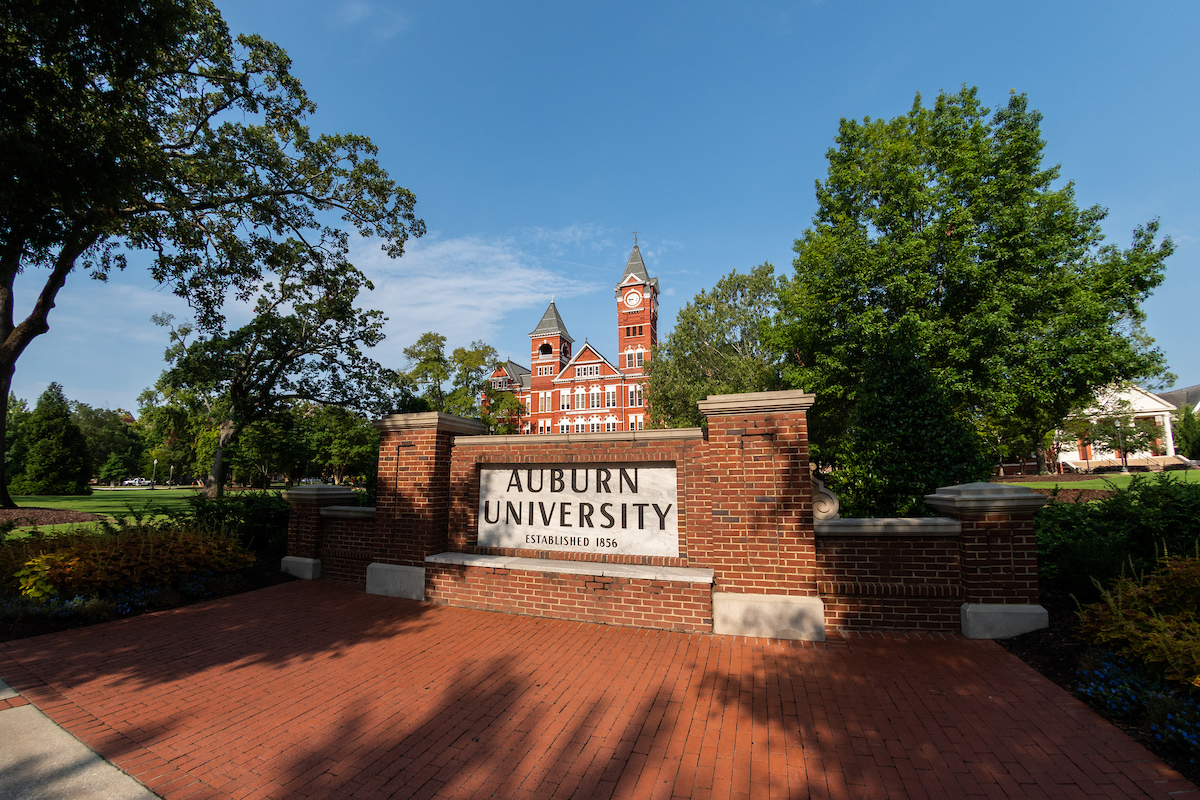
Categories: Auburn In the News, Energy & the Environment, Health Sciences, Engineering
Because This Is Auburn: A $1 Billion Comprehensive Capital Campaign for Auburn University
With the public kickoff of an ambitious $1 billion comprehensive campaign Saturday, April 18, 2015, (including announcement of the largest single gift in school history) Auburn University is delivering a renewed commitment to its students and faculty, a continued promise to the state of Alabama and a shared responsibility to the world.
Auburn also announced it has raised more than $775 million to date in support of the “Because This is Auburn” campaign, the largest in Auburn’s history and one of the largest fundraising campaigns to date in the state.
“Today, we show the world why we believe in Auburn University,” said Auburn President Jay Gogue. “This effort is unprecedented in Auburn’s 160-year history. This campaign will add new chapters to Auburn’s story and will make Auburn stronger for all the generations that follow.”
Before Saturday’s kickoff celebration at the A-Day football game, John and Rosemary Brown, both 1957 Auburn graduates, committed to Auburn $57 million, the largest gift in school history. The gift will fund two major new facilities: a new performing arts center and a student achievement center in the Samuel Ginn College of Engineering.
“We are very happy to give back to Auburn,” said John Brown. “Auburn was a transformative educational experience for us, preparing Rosemary for her career in teaching and laying the foundation for my various roles in industry.”
“We wanted to do something that not only impacted Auburn students, but also something that would impact the entire community,” said Rosemary Brown. “That is why we decided to do both the student center and the performing arts center.”
John W. Brown was CEO and chairman of the board of Stryker Corporation, a leading medical device company with annual revenue exceeding $9 billion. Rosemary K. Brown retired after serving as a mathematics teacher for almost 30 years. She has served on many community boards, including the Freed Hardeman University and Kalamazoo College Board of Directors, the Kalamazoo Symphony Orchestra Board, the Kalamazoo Institute of Arts Board and currently the Atlanta Opera Board. John serves on the boards of St. Jude Medical, the American Business Conference and the Auburn University Foundation. He is an inductee in the State of Alabama Engineering Hall of Fame, a recipient of the Auburn Alumni Association’s Lifetime Achievement Award, a recipient of an honorary law degree from both Freed Hardeman University and Kalamazoo College, the inaugural recipient of the AdvaMed Lifetime Achievement Award and will be the inaugural inductee into Auburn University’s Entrepreneur Hall of Fame hosted by the Raymond J. Harbert College of Business.
Auburn has named seven co-chairs for the campaign:
•Joe and Gayle Forehand, residents of Dallas, Texas, are members of Auburn’s 1856 Society and Petrie Society, as well as the Samuel Ginn College of Engineering’s Ginn Society and Eagle Society. Gayle is a 1970 business administration graduate of Auburn’s Raymond J. Harbert College of Business and served previously as chief accountant at Emory University and assistant controller at Emory University Clinic in Atlanta. Joe, who earned a degree in industrial engineering from Auburn’s Samuel Ginn College of Engineering in 1971, is the former chair and CEO of Accenture and currently serves as a director on the Auburn University Foundation Board of Directors.
•Raymond and Kathryn Harbert, residents of Birmingham, are members of Auburn’s 1856 Society, James E. Foy Loyalty Society and Heisman Society. Kathryn is a 1981 public administration graduate of the College of Liberal Arts and currently serves on the boards of directors of the Alabama Department of Archives and History and several community nonprofit organizations. Raymond, who earned a degree in 1982 from the Raymond J. Harbert College of Business, is chairman and CEO of Harbert Management Corporation, as well as a current member and immediate past president pro tem of the Auburn University Board of Trustees.
•Wayne and Cheryl Smith, residents of Nashville, Tennessee, are members of Auburn’s 1856 Society and James E. Foy Loyalty Society, as well as the College of Education’s 1915 Society and Patrons of the Kesytone/Dean’s Circle. Both College of Education graduates, Cheryl earned a degree in education in 1968. Wayne, who earned a bachelor’s degree in physical education in 1968 and a master’s degree in school administration in 1969, is chairman, president and CEO of Community Health Systems, as well as a member of the Auburn University Board of Trustees.
•Beth Thorne Stukes, who resides in Jasper, Alabama, is a member of Auburn’s 1856 Society and James E. Foy Loyalty Society, as well as the Woodlands and Wildlife Society in the School of Forestry and Wildlife Sciences. After attending Auburn University in the 1980s, she completed a bachelor’s degree in education at the University of Alabama at Birmingham in 1988. She chairs the College of Human Sciences’ Campaign Committee and serves as an Executive Committee member of its Women’s Philanthropy Board.
The “Because This is Auburn” campaign will support four major areas across the university. Auburn’s goal is to create thousands of new scholarships for students, to endow more than 100 new chairs and professorships for educators and researchers, to develop programs that will allow the Auburn Family to connect with people everywhere, and to build new facilities and re-imagine existing campus facilities.
“This campaign will inspire all of us to take action and show support through philanthropic investments in our university,” said Jane DiFolco Parker, vice president for development and president of the Auburn Foundation. “At the conclusion of the campaign, the world will see a strengthened Auburn—an institution with enhanced abilities to shape our world, serve our communities, equip our students and build a better future.”
Opportunities to support research include the LAUNCH Fund for Research Innovation at Auburn University. LAUNCH is designed to accelerate the best research and ideas into real products in the marketplace. LAUNCH is for innovative research projects that are likely to impact the regional economy and workforce development. It’s for projects that hold promise for generating additional sources of revenue for Auburn, with the goal of reinvesting those revenues to expand additional research efforts, year after year.
To learn more, visit: http://www.auburnrtf.org/
Or contact Mary Shirley-Howell at: mas0052@auburn.edu or at (334) 844-6438

Categories: Auburn In the News
SEC's Auburn Faculty Achievement Award presented to neurological disease researcher Doug Martin
Auburn University College of Veterinary Medicine professor and noted neurology researcher Dr. Doug Martin has been named the recipient of the Southeastern Conference’s 2020 Faculty Achievement Award for Auburn, announced today by the SEC.
Martin, a professor in the college’s Department of Anatomy, Physiology and Pharmacology and the Scott-Ritchey Research Center, will receive a $5,000 honorarium from the SEC, and he becomes Auburn's nominee for the SEC Professor of the Year, who will be selected from 14 nominees representing SEC universities.
“In a conference known for triple-doubles, triple plays and three-peats, Dr. Martin scores big in each of our three-part mission of groundbreaking research, innovative instruction and impactful service,” Auburn President Jay Gogue said. “He personifies the best of Auburn faculty, and we’re grateful for his dedication.”
The SEC Faculty Achievement Awards, created to recognize faculty accomplishments, scholarly contributions and discoveries, were established by SEC presidents and chancellors and are administered by the SEC provosts. The awards were first presented in 2012.
“Through his commitment to pioneering discovery and saving lives, Dr. Martin exemplifies how profoundly Auburn University cares about, invests in and is transforming research to advance our society,” said Provost and Senior Vice President for Academic Affairs Bill Hardgrave. “By inspiring future generations of scholars, Dr. Martin continues to make a difference in the lives of students, both at Auburn and around the world.”
Each recipient of the SEC Faculty Achievement Award must be a full professor at an SEC university, have a performance history of extraordinary teaching and a record of scholarship that is recognized nationally or internationally. Martin’s life-changing research has garnered over $10 million in external funding to Auburn from sources including the National Institutes of Health.
“It is a remarkable and unexpected honor to receive this award,” said Martin, who received his biology degree in 1989 and his doctorate in biomedical sciences in 1999, both from Auburn. “The award signifies the hard work and expertise of my many collaborators and lab members, and I hope to represent Auburn well among the SEC universities.”
Martin has 25 years’ experience in developing therapies for fatal neurologic disorders such as Tay-Sachs disease, Sandhoff disease and GM1 gangliosidosis. He and his colleagues have demonstrated the profound therapeutic effect of engineered viruses as gene transfer agents, dramatically improving the quality of life and lifespan of affected animals. Their results have led to the first-in-human gene therapy clinical trials for children with GM1, currently underway at the National Institutes of Health.
“Our treatment is extremely promising because it has worked well in cats suffering from GM1, and it is delivered by a single IV injection that takes less than an hour,” Martin said. “We hope the therapy helps children as much as it has helped the animals.”
Parents of a child with the disease each carry one copy of the mutated gene, but they do not show signs and symptoms of the condition. Porter Heatherly, the son of Auburn graduates Sara and Michael Heatherly of Opelika, Alabama, was the first known case of GM1 in Alabama and died in 2016 at age 4.
“I have been inspired by heroic families like the Heatherlys and Porter who fought the disease,” Martin said.
In his teaching role, Martin works with numerous veterinary, graduate and undergraduate students. Among his chief accomplishments, he says, is helping to train the next generation of researchers who are shaping a better, healthier world through their own careers.
Martin has served on numerous review panels for the National Institutes of Health and international foundations and he has received many awards, such as the Above and Beyond Award from the National Tay-Sachs and Allied Diseases Association and the Zoetis Award for Veterinary Research Excellence.
He and his wife, and numerous pets, reside in Opelika and he has two step-daughters who live in Phoenix and New York City.
BY CHARLES MARTIN
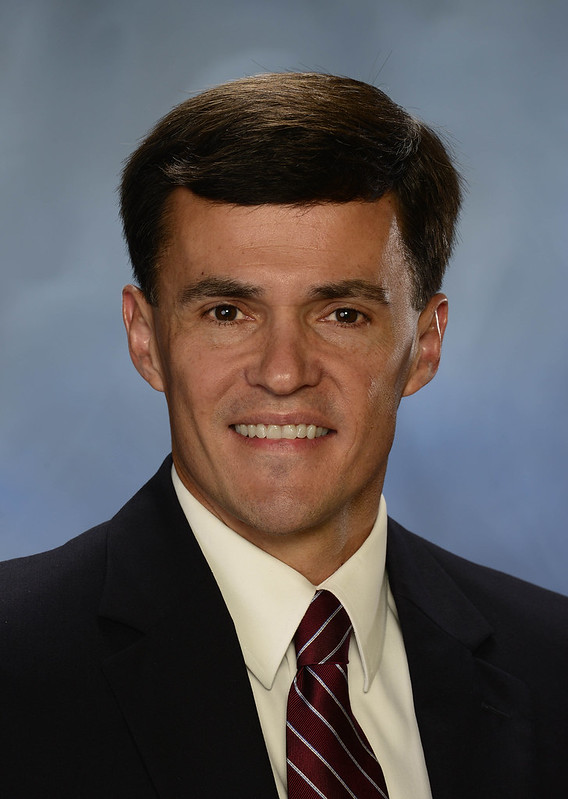
Auburn Professor Doug Martin has been named the recipient of the Southeastern Conference’s 2020 Faculty Achievement Award for Auburn. He and colleagues developed a gene therapy treatment for GM1 gangliosidosis that is in clinical trials at the National Institutes of Health.
Categories: Auburn In the News, Health Sciences
Auburn design adapts CPAP machines into emergency ventilators
A team of Auburn engineers has developed a way to quickly and inexpensively convert CPAP machines into ventilators, one of the most important tools hospitals have for helping COVID-19 patients.
Continuous positive airway pressure, or CPAP, machines are commonly used to help people with obstructive sleep apnea breathe more easily during sleep. The Auburn design, called RE-INVENT, is an accessory that would safely repurpose a CPAP into a functional ventilator.
Ventilators are in short supply at hospitals across the nation as the number of patients requiring respiratory assistance due to COVID-19 rises.
Tom Burch and Michael Zabala, faculty in the Samuel Ginn College of Engineering’s Department of Mechanical Engineering, and Hayden Burch, a sophomore in mechanical engineering, initiated the project. Additional engineering faculty and alumni helped refine the mechanical design, control system, user interface and alarms. Critical respiratory care medical professionals contributed to the design of RE-INVENT.
“What started as pure intellectual curiosity quickly grew into an emotional race against time to potentially save lives,” said Zabala, an assistant professor. “We wanted to know if we could design a solution to solve the ventilator shortage problem.”
The RE-INVENT team focused on a design that would reliably ventilate a patient for an extended period. They also considered affordability and ease of manufacture given the urgent, national need for ventilators. The device can be assembled in as little as four hours using approximately $700 in readily available component parts in addition to a standard CPAP machine. A ventilator typical in many hospitals costs as much as $25,000, often more.
“I use a CPAP machine, and it does 90 percent of what a ventilator does,” said Burch, who initially proposed incorporating continuous positive airway pressure into the RE-INVENT design.
“These are difficult times,” he said. “Everybody who understands the gravity of the situation wants to do something to help, so it feels good to think you’ve helped with something that may have an impact.”
Auburn officials are exploring options for sharing the design with health care providers and potential manufacturers. The U.S. Food and Drug Administration has provided guidance to health care providers that may allow them to use RE-INVENT to help increase the availability of ventilators and other respiratory devices during the COVID-19 pandemic.
Health care providers interested in collaborating with the Samuel Ginn College of Engineering during the current public health emergency can learn more online about RE-INVENT.
BY JEREMY HENDERSON
Media Contact: Jeremy Henderson, jdh0123@auburn.edu, 334-844-3591
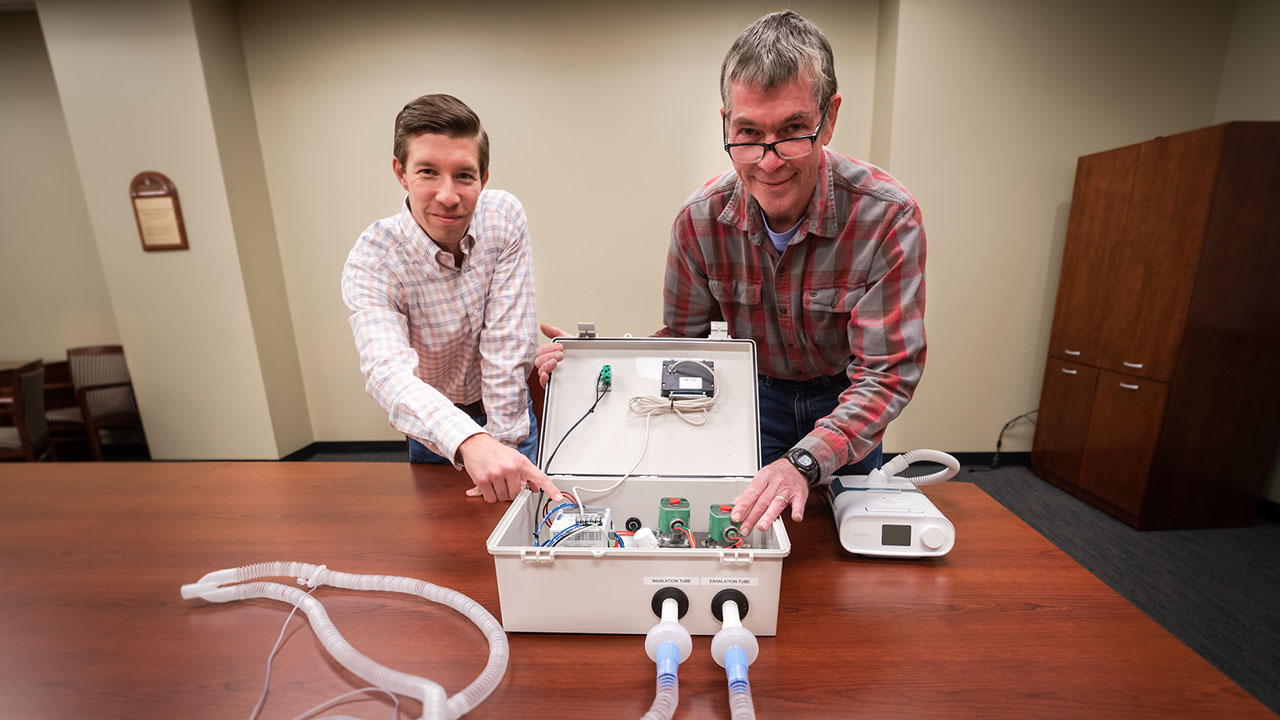 Michael Zabala and Tom Burch, faculty in the Samuel Ginn College of Engineering’s Department of Mechanical Engineering, and Hayden Burch, a sophomore in mechanical engineering, helped design RE-INVENT, an accessory that would safely repurpose a CPAP into a functional ventilator.
Michael Zabala and Tom Burch, faculty in the Samuel Ginn College of Engineering’s Department of Mechanical Engineering, and Hayden Burch, a sophomore in mechanical engineering, helped design RE-INVENT, an accessory that would safely repurpose a CPAP into a functional ventilator.
Categories: Auburn In the News, Health Sciences, Engineering
Department head emeritus named fellow of National Academy of Inventors
David Irwin, emeritus head of the Department of Electrical and Computer Engineering, has been named a fellow of the National Academy of Inventors.
Irwin was one of 168 prolific academic innovators from around the globe inducted into this year’s class of fellows.
The NAI fellows program recognizes academicians “who have demonstrated a spirit of innovation in creating or facilitating outstanding inventions that have made a tangible impact on quality of life, economic development and the welfare of society,” according to NAI.
“Being selected as an NAI fellow is one of the highest professional distinctions an academic inventor can earn,” said Christopher B. Roberts, dean of engineering. “This is a fitting recognition for Dave’s accomplishments in conducting pioneering research and driving the development of new technologies in the field of electrical and computer engineering.”
In addition to his innovative research, Irwin is also author and co-author of numerous publications, papers, patents and presentations, including nine textbooks, some of which have been translated into foreign languages. One of the textbooks, “Basic Engineering Circuit Analysis,” is in the 12th edition and has been used nationally and internationally for 35 years.
Irwin’s accomplishments have afforded him prominent standing in the field of electrical and computer engineering. He is a life fellow of the Institute of Electrical and Electronic Engineers, a fellow of the American Society for Engineering Education and a fellow of the American Association for the Advancement of Science, in addition to being an inductee into the State of Alabama Engineering Hall of Fame’s Class of 2015.
Media Contact: Chris Anthony, chris.anthony@auburn.edu, 334.844.3447
BY CHRIS ANTHONY
 David Irwin
David Irwin
Categories: Auburn In the News, Engineering
Raj Selected as 2020 Sloan Research Fellow
Monika Raj is on a mission to revolutionize the process of researching, diagnosing and treating cancer, with an ultimate goal of saving lives. It’s a drive that recently received $75,000 in funding support as Raj—an assistant professor in Auburn University’s Department of Chemistry and Biochemistry—became the only researcher in the state of Alabama selected into the 2020 cohort of Sloan Research Fellows.
“I am honored to have been selected and am excited for how this support will help advance my lab’s work in improving cancer diagnosis and treatment,” Raj said, adding that the Sloan Research Fellowship is not only valued for its prestige but also for its flexibility in providing research funding support.
The Alfred P. Sloan Foundation awards two-year, $75,000 fellowships to early-career scholars to advance their research in various fields. Winners of the 2020 Sloan Research Fellowships included 126 researchers across eight different fields. Raj was one of 23 chemists selected. The 2020 recipients were chosen from 60 colleges and universities across the United States and Canada.
Raj said it is quite a privilege to be named into a fellowship that through the years has included “many towering figures in the history of science.” Among that list, she said, are such physicists as Richard Feynman and Murray Gell-Mann, and game theorist John Nash. She said that 47 fellows have also received a Nobel Prize in their respective field, and 17 have won the Fields Medal in mathematics. A total of 69 fellows have received the National Medal of Science, and 18 have won the John Bates Clark Medal in economics, including every winner since 2007.
Raj has dedicated her career to discovering new drugs that might stop the progression of, and ultimately cure, such terminal diseases as cancer. In her lab, she is assisted by a postdoctoral researcher and a combination of graduate and undergraduate students, developing new chemical reactions, catalysis and ligation methodologies of biological molecules. In addition to her research, Raj also teaches biochemistry classes at Auburn.
“I believe that over the next three years, more advancement in cancer diagnosis and treatment will occur than in the past 100 years, and that my research can help achieve these goals,” she said.
Raj’s work has been included in numerous independent and doctoral publications, as well as in books and patents. Her past awards include:
-
A $1.9 million, five-year Maximizing Investigator’s Research Award (MIRA) (R35) from the National Institutes of Health (NIH), National Institute of General Medical Sciences, awarded in 2019
-
An American Peptide Society (APS) Early Career Lectureship in which she presented her work at a symposium in Monterey, California, in June 2019
-
A $650,000 National Science Foundation (NSF) Faculty Early Career Development Program (CAREER) Grant: Secondary Amine Selective Petasis, awarded in 2018
BY MELANIE VYNALEK
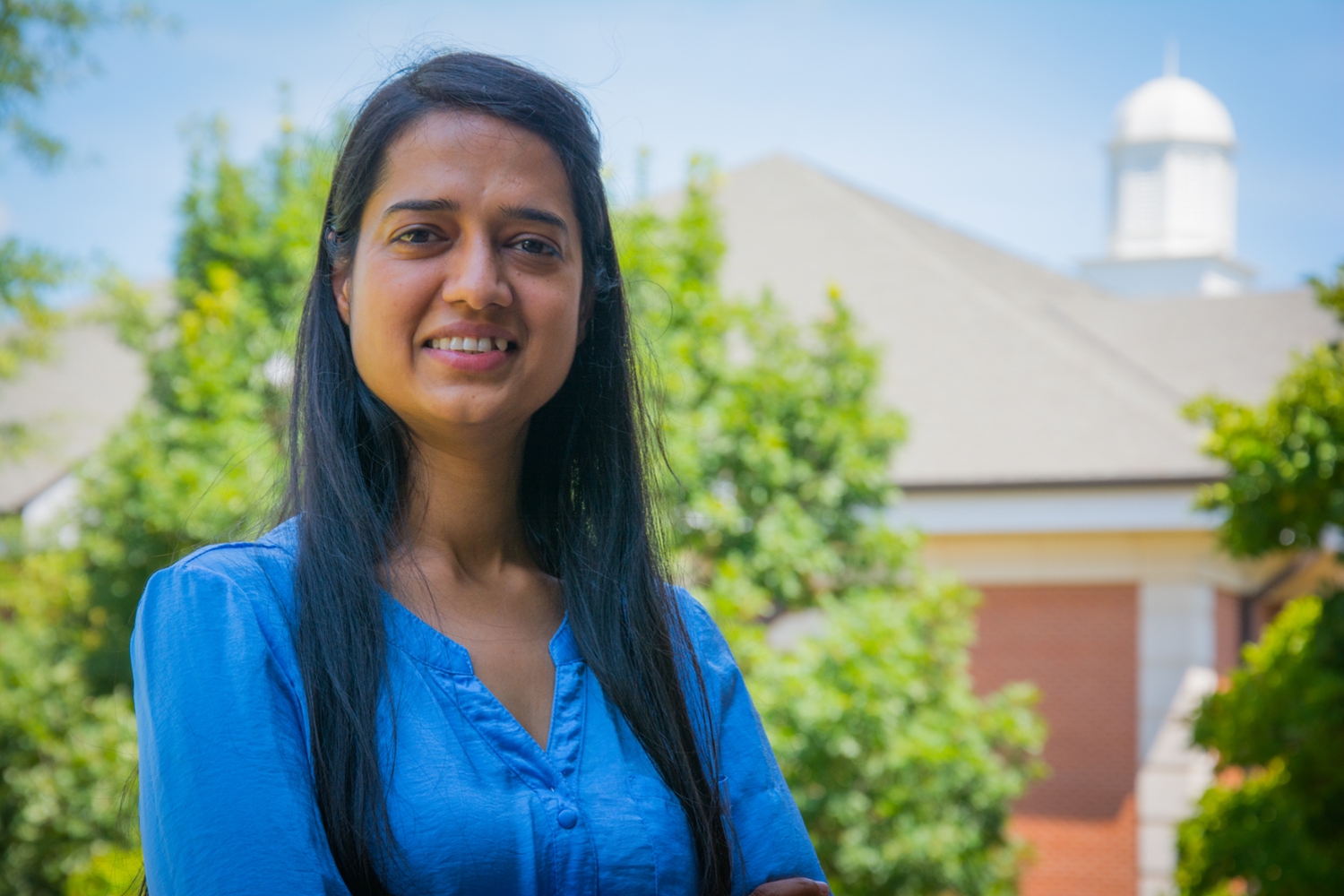 Monika Raj
Monika Raj
Categories: Auburn In the News, Health Sciences
Auburn University achieves research milestone with ‘R1’ Carnegie classification
In another affirmation of its drive forward to excellence, Auburn University achieved a research milestone Monday - being elevated to an “R1” institution by the Carnegie Classification of Institutions of Higher Education.
The announcement follows a concerted effort by Auburn to elevate its commitment to life-saving research, beginning with an announcement by Auburn President Steven Leath in December 2017 and subsequent awarding of $5 million for three years toward the Presidential Awards for Interdisciplinary Research, or PAIR. An R1 designation by Carnegie is reserved for doctoral universities with the highest levels of research activity.
Among 120 institutions to receive the R1 designation Monday, Auburn was listed in the top 100 of such universities, raising its classification from an already lofty “high research” R2 classification to Monday's “very high research activity” R1 label.
“This tremendous designation acknowledges the hard work involved in the pioneering discoveries happening at Auburn every day,” said Leath, who was recently named one of seven new members appointed by President Trump to the National Science Board, a policy-making body of the National Science Foundation. “We are grateful to the university’s faculty and staff, especially Graduate School Dean George Flowers, for their unwavering commitment to elevating Auburn’s profile as a world-class academic institution.
“Auburn is on the move, and this prestigious distinction recognizes Auburn’s critical role in creating new knowledge and helping others live better lives.”
Universities considered for the R1 designation must have awarded at least 20 research/scholarship doctoral degrees and had at least $5 million in total research expenditures, according to Carnegie’s classification website. Auburn has grown its research efforts in both STEM and non-STEM areas, furthering its institutional commitment to offer solutions to real-world problems and grow its reputation as a go-to university in providing results that transform and inspire.
“Auburn University is known for its innovative and transformational research, and receiving the R1 classification is a significant accomplishment,” said Jennifer Kerpelman, interim vice president for research. “This classification recognizes the dedication, commitment and hard work of Auburn’s faculty and student researchers across all disciplines.”
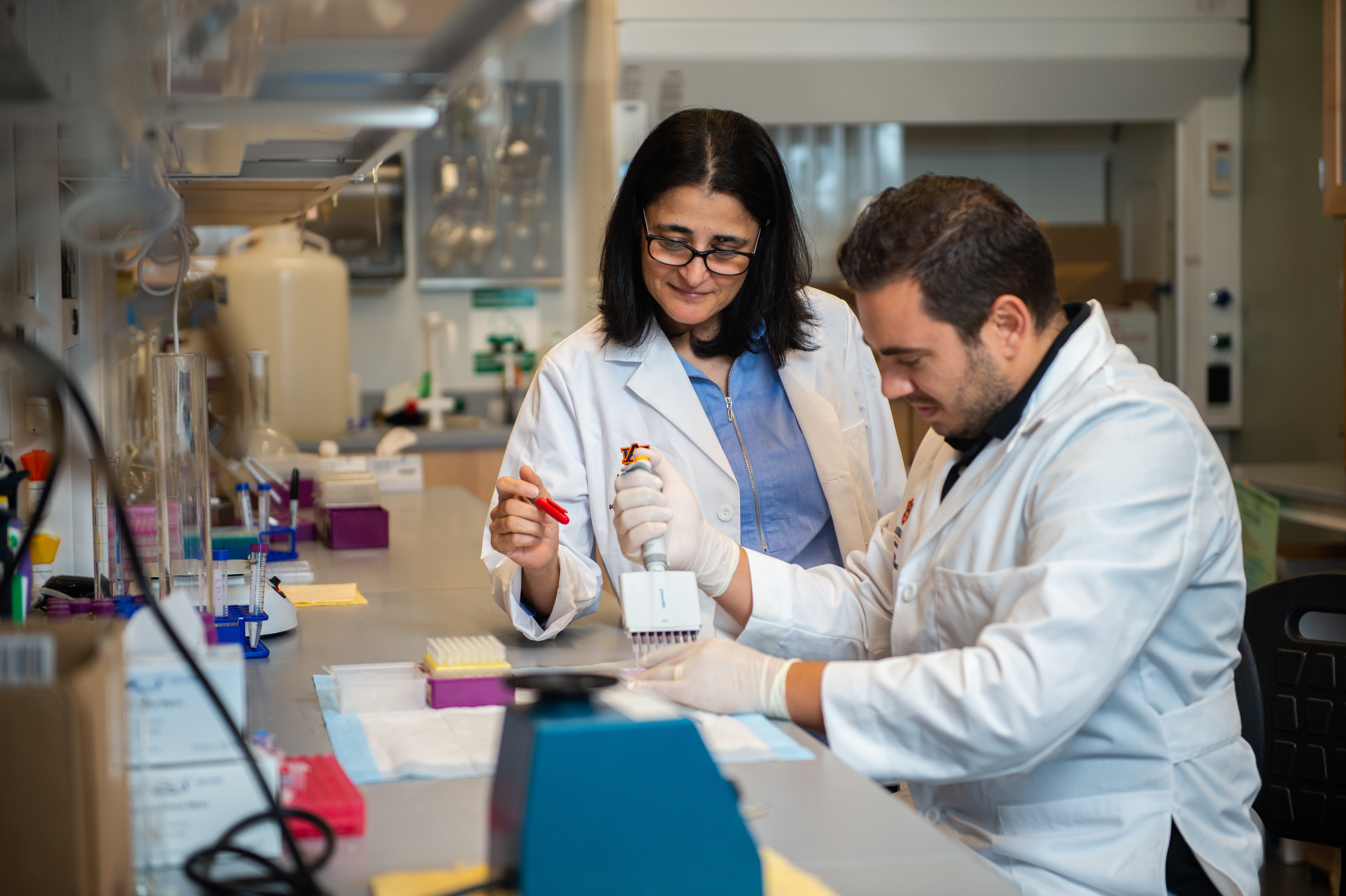
Dr. Amal Kaddoumi, left, a professor in Auburn’s Department of Drug Discovery and Development, works in a lab with graduate research assistant Sweilem Al Rihani. Kaddoumi is leading a multi-disciplinary team in an investigation of oleocanthal, a molecule that appears naturally in extra-virgin olive oil, as a novel preventative treatment for such diseases as Alzheimer’s or dementia.
Categories: Auburn In the News, Cyber, Energy & the Environment, Health Sciences, Science, Technology, Engineering and Mathematics (STEM), Transportation, Food Systems, Engineering, Creative Scholarship
The Rural Studio in Auburn’s College of Architecture, Design and Construction was recently featured by the Huffington Post for using their expertise to bring practical solutions to real-world housing problems.
In 1993, two Auburn University architecture professors, Dennis K. Ruth and Samuel Mockbee, established the Auburn University Rural Studio within the university's School of Architecture. The Rural Studio, conceived as a method to improve the living conditions in rural Alabama and to include hands-on experience in an architectural pedagogy, began designing and building homes that same fall. Professors Mockbee and Ruth sought funding to begin the studio, and through the years, it has received additional funding that has helped it become what it is today: a vision of a process to make housing and community projects in one of the poorest regions of the nation.
To most, the measure of success of the Rural Studio is in its built projects; in reality, its success is measured by its effect upon the lives of the students, faculty, families, and communities it touches. It is not only the buildings that make the Rural Studio what it is, but also the education the students receive about architecture and about society. Ultimately, it is about "sharing the sweat" with the community.
To read the Huffington Post article, $20,000 Homes Created By Students Could Help Fix Rural America’s Affordable Housing Crisis visit: http://www.huffingtonpost.com/2015/02/17/affordable-housing-rural-studio_n_6698096.html
To learn more about the Rural Studio, check out: http://cadc.auburn.edu/architecture/special-programs/rural-studio

Categories: Auburn In the News
Students win Tiger Cage competition by designing app to locate vacant parking spaces
One Tiger Cage judge boasts a net worth in excess of $400 million and the experience of being an original "Shark Tank" panelist. Three others are successful venture capitalists. No pressure, young entrepreneurs.
Two seniors in mechanical engineering impressed the group so much with their concept of a parking management system utilizing sensors and cloud-based data management that they walked away with a $10,000 grand prize in the first Tiger Cage student entrepreneurship final round on Friday, April 24.
Jonathan Philip, of Madison, Alabama, and Alex Wakefield, of Huntsville, Alabama, created and pitched "Parking Grid Technologies," app-based software that alerts commuters to available parking spots on-demand, in a competition that began in October with 20 teams and ended with four finalists at The Hotel at Auburn University and Dixon Conference Center. Philip and Wakefield also walked away with $30,000 in legal funding from the Silicon Valley-based law firm of Wilson, Sonsini, Goodrich & Rosati.
Hosted by the Raymond J. Harbert College of Business in partnership with the Auburn Research and Technology Foundation, Tiger Cage rewards the best early-stage products, business concepts or services that emerge from student entrepreneurs. The panel of industry professional judges included Kevin Harrington, original panelist from ABC's "Shark Tank" and pioneer of the "As Seen on TV" product line, who made Ginsu Knives and exercise mogul Tony Little household names.
Finalists were given 15 minutes to pitch their ideas – showing viability and estimated market demand for the products. Winners were announced that evening at the Auburn University Entrepreneur Hall of Fame Gala, a black-tie event capping the inaugural Entrepreneurship Summit hosted by the Raymond J. Harbert College of Business.
Other finalists included:
- Runner-up ($5,000): SimplyProse, an editing and writing platform designed by Cole Kinchler (Supply Chain Management), Sharan Kalva (Industrial and Systems Engineering) and Jake Wright (Finance);
- Third place ($2,000): LifeLike Projections, which customizes retail stores via projection-mapping technology, created by Vincent McNeeley (Information Systems Management);
- Fourth place ($1,000): BAUCE, a social media application created by Hunter Barriault (Business Administration) and Brett Townsend (Engineering).
"They (Parking Grid Technologies) showed us a good amount of clarity – they understood their market and the financial aspect of the business," said Scott Kupor, COO of Andreessen Horowitz, a Silicon Valley-based venture capital firm, and one of six final round judges. "They made a strong presentation and they showed a need (for the product)."
Other final round judges included Paul McCreadie, director of Michigan-based capital firm Arboretum Ventures; Chris McCulley, founder and CEO of robotics manufacturer Deshazo Automation; Will Brooke, senior partner for Harbert Management Corporation Venture Capital; and LaKami Baker, managing director of the Lowder Center for Family Business and Entrepreneurship.
"They were all very polished and it was obvious that they had done a great job of preparing," noted Harrington.
John Mason, Auburn University vice president for research and economic development and president of the Auburn Research and Technology Foundation, relishes the role of Auburn as leader in entrepreneurship.
"Auburn University is focused on enhancing its economic development role for the state of Alabama through entrepreneurship, innovation and the commercialization of our intellectual property," he said.
John Weete, executive director of the Auburn Research and Technology Foundation, added, "The ARTF is very pleased to work with the Harbert College in promoting entrepreneurship among Auburn University students and providing one year of free space in the Auburn Business Incubator to the winner."
Moments after learning the judges' decision, Wakefield called the win "euphoric." Philip considered it "surreal."
"It's been a very rough road to get here. We put a lot of hard work into it," said Wakefield, who is earning a minor in Business-Engineering-Technology. "We're both doing 18-hour semesters in engineering and it's not been an easy task to balance this at the same time. I feel so humbled and blessed. It's not anything that I could have done without the help from (teammate) J.P."
Teams were mentored through the competition by industry professionals from a variety of disciplines.
"That's been so beneficial, this whole process," added Philip, who is also earning a B-E-T minor. "The mentorship was a huge aspect that was crucial to this. Like what (Delphinus Medical Technologies CEO and student mentor) Mark Forchette said, 'If it's just a business competition it's a failure.' Putting the mentorship part in was a game-changer in this. I know Alex and I benefited so much from that."
As 200 gala attendees applauded the winners, one man stood in the back of the room and fought back tears. Steve Wakefield, senior vice president of IT at Cenveo in Stanford, Conn., and Auburn chemical engineering alum (1985), was on business Thursday in New York City. By Friday morning, he had flown to Auburn and surprised his son before the Tiger Cage final round.
"It was her idea," Steve said, pointing at Sara Wakefield, Alex's wife and senior in kinesiology at Auburn. "She asked if I could come support him and surprise him."
Sara Wakefield said the father's surprise, "meant the world to Alex."
"He's always looked up to his dad," she said. "Both are engineers. It was an honor to have his dad come and support him and start his own company — just like his dad."
Steve Wakefield, who started a consulting company in Huntsville when Alex was six weeks old, simply said, "A father couldn't be more proud."
Tiger Cage wasn't the only award issued Friday night. The Thomas Walter Center for Technology Management offered the following prizes for the Most Innovative Products:
- First place ($2,500): Parking Grid Technologies;
- Second place ($1,500): Tennibot, formerly the Hobot, a robotic device that tracks and scoops tennis balls developed by Haitham Eletrabi, Shane Tucker, Mondather Suliman and Xuemei Yuan.
By: Joe McAdory
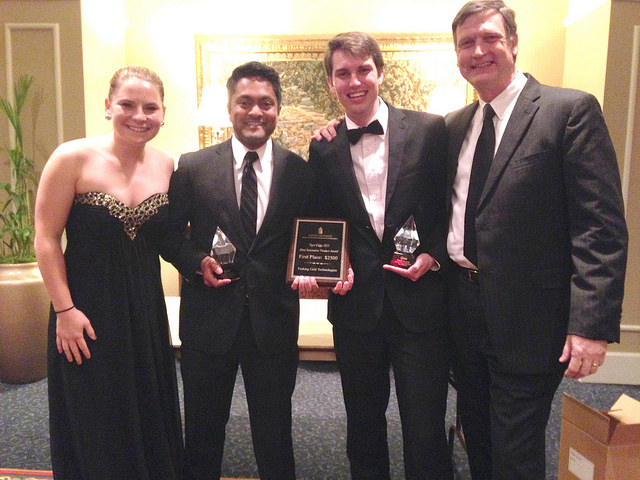
Categories: Auburn In the News
Auburn University holds grand opening for its new RFID Lab; announces joint project with Amazon
Auburn University's new RFID Lab held its grand opening Wednesday, during which Amazon announced a joint project with Auburn to explore the business case for the implementation of RFID within the Amazon supply chain.
At the event, Dave Clark, Amazon's senior vice president of worldwide operations, said, "RFID is a fascinating technology. As part of this joint project, we are excited to invent new processes and technology using RFID to enhance the experience for customers through better inventory predictability, faster delivery and, ultimately, lower cost. The collaboration presents a unique opportunity for students, faculty and industry to come together in a hands-on and fast-moving real world environment."
Auburn University's RFID Lab specializes in the business case and technical implementation of radio frequency identification technology in retail, supply chain and manufacturing settings. The lab draws on the expertise of faculty in Auburn University's Raymond J. Harbert College of Business, Samuel Ginn College of Engineering, College of Human Sciences and College of Agriculture. In moving to Auburn University in 2014, the lab was reunited with its founder, Harbert College of Business Dean Bill Hardgrave. Hardgrave helped launch the lab at the University of Arkansas in 2005.
Even though its location has changed, the lab has continued to work with leading retail, supply chain, manufacturing and technology companies.
"As the RFID industry expands, it's important to have as many users engaged in the lab as possible as lessons from one industry often hold true for others," Auburn University RFID Lab Director Justin Patton said. "Having unique retail partners like Amazon engaged in the lab allows us to focus on the research questions that are most crucial to many different users, and add the academic validation that helps bring maturity to the evolving market."
Amazon has utilized RFID technology in its fulfillment centers, the massive facilities where customer orders are picked from shelves, moved on conveyers and loaded onto trucks for rapid shipping and delivery. Founded in 1994 and based in Seattle, the company's footprint includes more than 100 fulfillment centers worldwide.
Located in a former supermarket, the 13,000-square foot Auburn University RFID Lab offers simulated retail, grocery and convenience store space, as well as warehouse and distribution center environments. The Auburn University RFID Lab established the first RFID "tagged item certification program" to assist retail product manufacturers. RFID technology utilizes computer chips smaller than a grain of sand to aid in the wireless tracking of items.
by Troy Johnson

Categories: Auburn In the News
Auburn University Research Initiative in Cancer announces academic-biotech collaboration
Researchers from the Auburn University Research Initiative in Cancer, or AURIC, and Nuovo Biologics LLC, of Davie, Florida, have announced a partnership to develop new therapies for cancer.
Initially targeting canine malignant melanoma, or skin cancer, a deadly tumor that affects many dogs, the team will be testing Nuovo’s innovative anti-cancer peptide drug MMX for its ability to treat these tumors.
The National Institutes for Health recently awarded a grant funded by the U.S. Food and Drug Administration to support a clinical trial of the new peptide treatment. According to Dr. Bruce Smith, director of AURIC and leader of the Auburn component of the research effort, the clinical trial will begin to recruit patients as early as June or July.
Jay Yourist, CEO of Nuovo Biologics, Auburn’s biotech partner, said, “This clinical trial represents the next step in moving MMX forward to FDA approval.”
In addition to the planned research with Nuovo, AURIC scientists are pursuing a wide variety of interdisciplinary cancer research, ranging from identifying the basic mechanisms that make normal cells become cancerous to a variety of new approaches to treating cancers. Funding for AURIC research is provided by the state of Alabama, federal research grants, funding from private organizations and donations from individuals.
Both AURIC and Nuovo Biologics take a One Health/One Medicine approach to cancer treatment, allowing discoveries in one species to be translated to other species. This latest partnership builds on the collaborative approach Nuovo has implemented with academic institutions, researchers and veterinarians across the country.
Founded in 2010, Nuovo Biologics is focused on developing a unique set of therapeutic protein drugs. Extensive in-vitro and animal model studies have shown these new peptide drugs to be promising in the oncology sphere, but also to have broad anti-viral application. Nuovo’s business model leverages strong collaborations to test animal products, which serve as models for the human market moving forward. For more information about Nuovo Biologics, go to http://www.nuovobiologics.com/.
The Auburn University Research Initiative in Cancer promotes research that enhances competitiveness to advance the understanding of the biology of cancer, and fosters the translation of novel technologies from the laboratory to the clinic. AURIC is human medicine, animal medicine, research and diagnostics where faculty, students and staff work together to solve the complex puzzle of cancer. AURIC is based within the Auburn University College of Veterinary Medicine. For more information about AURIC, go to http://www.auriconline.org/. by Janet McCoy

Categories: Auburn In the News
Dr. Robert Norton receives Knowlton Award from Military Intelligence Corps Association
On May 1, 2015, Dr. Robert Norton, professor and director of the Auburn Univeristy Open Source Intelligence Laboratory received the prestigious Knowlton Award from the Military Corps Association (MICA) for his support of the Military Intelligence Corps. The Knowlton Award recognizes individuals who have contributed significantly to the promotion of Army Intelligence in ways that stand out in the eyes of the recipients, their superiors, subordinates, and peers. These individuals demonstrate the highest standards of integrity and moral character, display an outstanding degree of professional competence, and serve the Military Intelligence Corps with distinction.
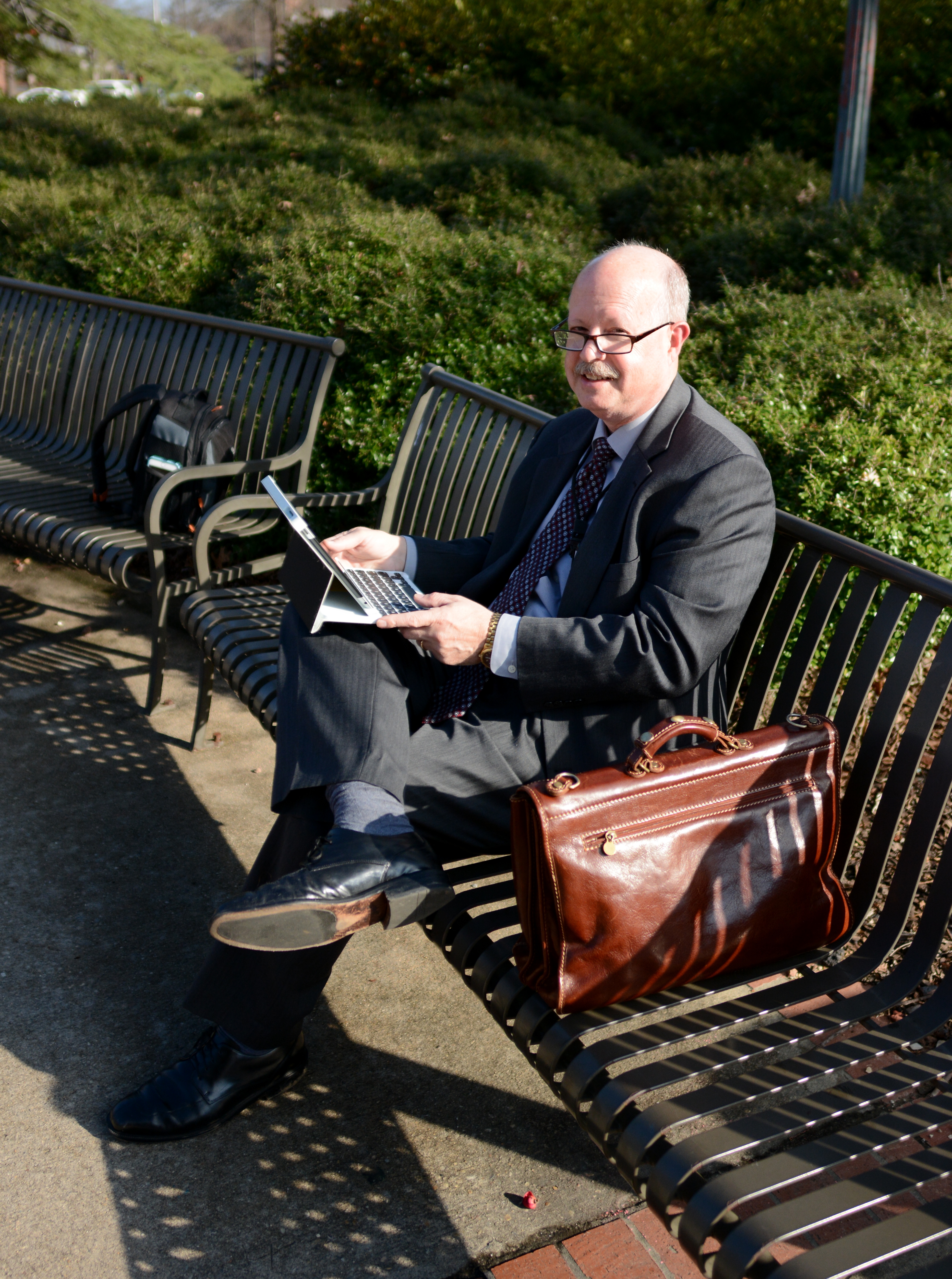
Categories: Auburn In the News
Auburn University named Innovation and Economic Prosperity University
One of the nation's top higher education associations today recognized Auburn University for leadership in fostering economic growth, prosperity and innovation.
The Association of Public and Land-grant Universities named Auburn an Innovation and Economic Prosperity University, a designation that recognizes the university's strong commitment to economic engagement and its work with public and private sector partners in Alabama and the region.
"Auburn is in the business of helping people achieve their hopes and dreams, and that's why we're committed to working alongside entrepreneurs, industry leaders and government officials as an engine of economic opportunity," Auburn University President Jay Gogue said.
The Association of Public and Land-grant Universities, or APLU, is a research, policy and advocacy organization dedicated to strengthening and advancing the work of public universities in the U.S., Canada and Mexico.
Auburn began the application process for the Innovation and Economic Prosperity University designation in September and engaged in an extensive self-study which included, among other things, surveys and focus groups with stakeholders from around the state of Alabama. The study found Auburn had a $5.1 billion economic impact on the state economy in 2014 and supports 23,600 jobs, in addition to direct employment.
"We are establishing partnerships and providing support to business and industry with an eye toward spurring growth," said John Mason, Auburn University vice president for research and economic development. "These relationships benefit our students with learning experiences, while companies benefit from Auburn's world-class faculty and research."
A highlight is the university's engagement with GE Aviation to help bring high-volume additive manufacturing to the GE facility in the city of Auburn, where it will manufacture jet engine fuel nozzles. The facility will be the first of its kind to mass produce additive components for the jet propulsion industry. The university will collaborate on training and industrializing processes as well as developing a curriculum for engineers interested in industrialized additive manufacturing.
Auburn is also home to a 13,000-square-foot Radio Frequency Identification, or RFID, Lab focusing on the business and technical implementation of RFID and other new technologies in retail, supply chain management and manufacturing. It is a unique private and academic partnership between major manufacturers and retailers, technology vendors, standards organizations as well as top faculty and researchers from many disciplines.
Auburn is one of 18 universities named in APLU's third annual class of Innovation and Economic Prosperity Universities and is the only university named in the state of Alabama. Joining Auburn this year are Binghamton University; Clemson University; East Carolina University; Mississippi State University; New Jersey Institute of Technology; New Mexico State University; Ohio University; Southern Illinois University; University of Arizona; University of Kansas; University of Louisville; University of Maryland; University of Nebraska-Lincoln; University of New Mexico; University of South Florida; Utah State University; and Western University.
With a membership of 238 public research universities, land-grant institutions, state university systems and affiliated organizations, APLU's agenda is built on the three pillars of increasing degree completion and academic success, advancing scientific research and expanding engagement.
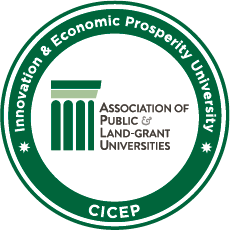
Categories: Auburn In the News
Auburn engineering alumnus named deputy director of NASA’s Marshall Space Flight Center
Todd May, a 1990 alumnus of Auburn University in materials engineering, has been named deputy director of NASA's Marshall Space Flight Center in Huntsville, Alabama. He will help manage the center's nearly 6,000 civil service and contractor employees and $2.5 billion annual budget.
Since 2011, May served as manager of the Space Launch System, a new large rocket that replaces the space shuttle to take astronauts and probes into space. The rocket is one of NASA's top three priority projects, with May overseeing its development at Marshall through its in-depth critical design review in July.
Previously, May managed the agency's robotic lunar program including the successful launch of two lunar probes in 2009. He also served as deputy associate administrator in the Science Mission Directorate at NASA headquarters in Washington, D.C., as well as the deputy manager of Marshall's Science and Mission Systems Office in a dual role as associate program manager of the Constellation Program, which looks to reenergize NASA human spaceflight efforts.
May has been honored with NASA's Exceptional Achievement Medal and Leadership Medal, the Presidential Rank Award of Meritorious Executive and the John W. Hager Award for professionalism in materials engineering. In 2014, he received Aviation Week's Program Excellence Award. May was named the Distinguished Auburn Engineer by Auburn's Samuel Ginn College of Engineering in 2012 and received the college's Outstanding Auburn Engineer Award in 2010.
May and his wife, Kelly, have four children and reside in Huntsville, Alabama.
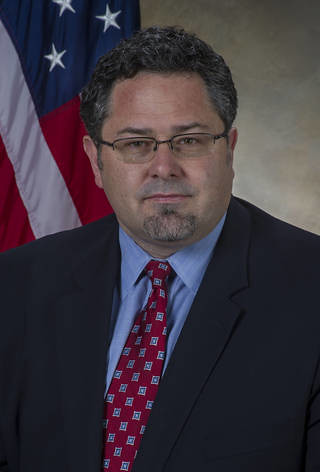
Categories: Auburn In the News, Engineering
Auburn University’s Pradeep Lall to lead national manufacturing center on harsh environment electronics
Auburn University has been selected to lead a national manufacturing effort on harsh environment electronics as part of a U.S. Department of Defense led flexible hybrid electronics institute.
On Friday, Aug. 28, at NASA's Ames Research Center, Department of Defense Secretary Ashton Carter announced a cooperative agreement to the research consortium FlexTech Alliance to establish and manage a Manufacturing Innovation Institute for Flexible Hybrid Electronics, or FHE MII.
FlexTech Alliance, based in San Jose, California, will coordinate the FHE MII, which comprises 96 companies, 11 laboratories and non-profits, 43 universities and 15 state and regional organizations. Auburn University will head the only node in the state of Alabama.
Leading Auburn's node on harsh environments is Pradeep Lall, the John and Anne MacFarlane endowed professor of mechanical engineering and director of Auburn's NSF Center for Advanced Vehicle and Extreme Environment Electronics, or CAVE.
"This establishment will provide engineers with the integrated skills and theoretical background for the manufacture of flexible hybrid electronics for extreme environment applications," said Lall. "It will create intellectual property and expenditures on research, education and related activities, as well as catalyze development of technologies which can be manufactured in the state. We have developed strategic partnerships with industry and research labs in Alabama and nationally for development and demonstration of technologies for harsh environment operation."
The institute will be awarded $75 million in federal funding over a five-year period and is being matched by more than $96 million in cost sharing from non-federal sources including private companies, universities, not-for-profit organizations and several states, including Alabama.
"The strength of the institute will stem from the strong support and previous work of our partner organizations," said Michael Ciesinski, CEO of FlexTech Alliance. "Auburn University's strong work in utilizing electronics in harsh environments will lend the institute a huge advantage in the special needs for that environment. We look forward to collaborating with the excellent team there and the CAVE facility."
In addition to defense, the institute's activities will benefit a wide range of markets including automotive, communications, consumer electronics, medical devices, health care, transportation and logistics and agriculture.
"I am pleased that Auburn University is a partner in this national organization, and that Dr. Lall is leading the way for its initiatives on harsh environments," said Christopher B. Roberts, dean of the Samuel Ginn College of Engineering. "The institute represents an innovative collaboration between the public and private sectors and has the potential to make a huge impact on our nation as we continue to embrace advanced manufacturing."
The new institute is part of the National Network for Manufacturing Innovation program. The FHE MII is the seventh manufacturing innovation institute announced and the fifth under Department of Defense management. The institutes are intended to bridge the gap between applied research and large-scale product manufacturing, and it is anticipated that Auburn's harsh environment node will create technologies for the benefit of the nation's commercial and national defense interests.
By: Morgan Stashick
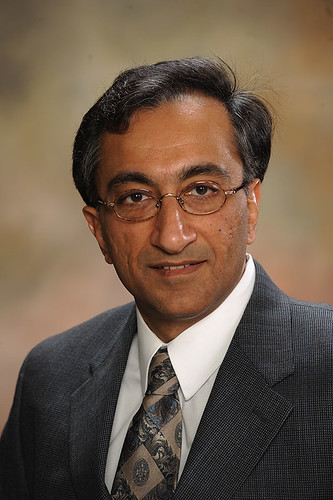
Categories: Auburn In the News, Engineering
Auburn University Research Advisory Board Member, Dr. Paul Lioy, passes away.
It is with profound sadness that we share the news of the sudden passing of dedicated Research Advisory Board member, Paul Lioy on Wednesday, July 8, 2015. Dr. Lioy was an active member of the Research Advisory Board and a strong advocate for Auburn Research. Dr. Lioy was Professor and Vice Chair of the Department of Environmental Medicine at the Robert Wood Johnson Medical School of Rutgers University.
As many of you in the university community may know, Dr. Lioy was a pioneer in air pollution research and was one of the first scientists to take samples from Ground Zero after the Twin Towers collapsed. He was considered one of the world's leading experts in personal exposures to toxins and was elected a fellow at the Collegium Ramazzini Environmental and Occupational Medicine and Health, Carpi, Italy, in 1999. Since 2002 Dr. Lioy was one of Information Sciences Institute's most highly cited scientists in the category of environment and ecology. He was the recipient of numerous national and international awards, including the International Society of Exposure Science Jerome Weslowski Award for Lifetime Achievement and the Ellen Hardin Walworth Medal for Patriotism. Among the many books he authored, he was the most proud of "Dust: The Inside Story of its Role in the September 11th Aftermath."
Dr. Lioy's obituary may be found here: http://obits.nj.com/obituaries/starledger/obituary.aspx?pid=175266266
A New York Times article concerning his passing and the signifcance of his work may be found here: http://mobile.nytimes.com/2015/07/12/nyregion/paul-lioy-scientist-who-analyzed-9-11-dust-and-its-health-effects-dies-at-68.html?referrer&_r=0
The thoughts and prayers of the Auburn Family are with Dr. Lioy's family and friends at this difficult time.
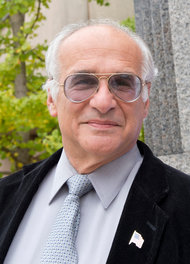
Categories: Auburn In the News
Auburn University researcher wins National Science Foundation award for technological innovation
Auburn University mechanical engineering professor Pradeep Lall has received a top National Science Foundation award for his work as director of Auburn's Center for Advanced Vehicle and Extreme Environment Electronics, or CAVE3. His research includes developing methods for protecting electronics in harsh environments.
Lall, the John and Anne MacFarlane Endowed Professor in Auburn's Department of Mechanical Engineering, was recently awarded the 2016 Alexander Schwarzkopf Prize for Technological Innovation from the National Science Foundation's Industry/University Cooperative Research Centers program.
"This award is reaffirmation of Dr. Lall's national reputation and recognition of his seminal contributions to the field of mechanical engineering," said Christopher Roberts, dean of the Samuel Ginn College of Engineering. "His work has positioned Auburn Engineering to be a leader in harsh environment electronics research as we address the challenges in this exciting field."
Lall's research focuses on the development of methods for assuring survivability of electronics to high shock forces, vibration and extreme temperatures. He is best known for his research in the areas of reliability and prognostics for electronic systems operating in harsh environments such as:
- Combined exposure to temperature and vibration under the hood of an automobile for electronics mounted on-engine or on-transmission;
- Extreme cold or extreme hot environmental temperatures for prolonged periods of time experienced in military and defense applications;
- High g-forces experienced by electronics inside missiles;
- Corrosive attack of salt fog for electronics operating on ships at sea.
"Electronic systems have taken an increasingly important role in automotive design and operation," Lall said. "Traditional automotive electronics at one time consisted of climate control and entertainment systems. Roll the clock forward to the present day and automotive electronics have expanded to include driving assists such as antilock braking systems, traction control systems, adaptive cruise control, lane departure warning systems and more. Failure of one of these systems is no longer an inconvenience; it may be critical to the safe operation of the vehicle."
Founded in 1999 as the Center for Advanced Vehicle Electronics, CAVE3 has over the years expanded its expertise to include extreme environment electronics. Lall has been the center's director since 2008, following his appointment as associate director in 2004. Lall also directs Auburn's Harsh Environments Node of the NextFlex Manufacturing Institute, part of a national manufacturing effort on harsh environment electronics led by the U.S. Department of Defense.
CAVE3 partners with industry, government and academic agencies to address major technological challenges through precompetitive research on automotive and harsh environment electronics. This arrangement gives the center an opportunity to address the challenges before the technologies become commercialized.
Lall joined the Auburn faculty in 2002 after a distinguished industry career at Motorola, where he worked on the development and manufacture of wireless products such as cellphones and two-way radios.
"Dr. Lall's recognition with the Alex Schwarzkopf Prize is evidence of the societal and transformational impact that Auburn University is making on automotive and harsh environment technologies in everyday life," said John Mason, Auburn's vice president for research and economic development.
The National Science Foundation's cooperative research centers program was established in 1973 by Schwarzkopf to develop long-term research partnerships among industry, academe and government in areas of mutual interest. The Alexander Schwarzkopf Prize for Technological Innovation has been presented annually since 2003 to an individual or team at a member institution whose research makes an exemplary contribution to technology innovation. More than 100 universities and nearly a thousand researchers are members.
By: Chris Anthony
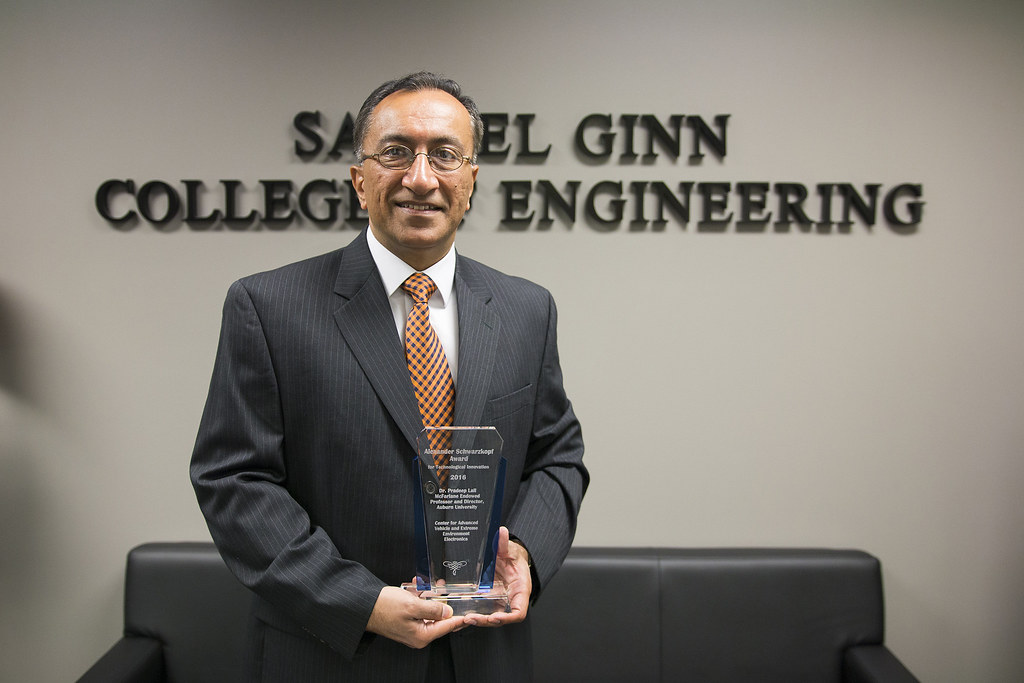
Categories: Auburn In the News, Science, Technology, Engineering and Mathematics (STEM), Engineering
Auburn University and NASA sign Space Act Agreement on additive manufacturing
Auburn University and NASA today signed a Space Act Agreement to explore and advance the applications of additive manufacturing, or 3-D printing.
The signing took place during the university’s forum on additive manufacturing, a process that uses 3-D printing to make a three-dimensional part or instrument, providing substantial technological advances and cost savings over traditional manufacturing methods. The forum was co-sponsored by Auburn University and the City of Auburn Industrial Development Board.
“Additive manufacturing is a major advancement for the future direction for the nation’s industries,” said John Mason, Auburn University vice president for research and economic development. “The partnership with NASA is an excellent opportunity to engage and leverage each other’s capabilities and expertise.”
The Space Act Agreement, in addition to focusing on additive manufacturing, is designed to advance STEM disciplines – science, technology, engineering and mathematics – by engaging students and teachers in NASA’s missions and opportunities; investigate and develop technologies; and share facilities, capabilities and technical expertise.
“As we continue developing the agency’s powerful new rocket, the Space Launch System, for deep-space missions to an asteroid and a journey to Mars, additive manufacturing techniques are making it possible to create and test innovative new designs quickly and affordably,” said Patrick Scheuermann, director of NASA’s Marshall Space Flight Center in Huntsville, Alabama. “Marshall is also pioneering the use of 3-D printers in space, and the recycling and sustainability of advanced manufacturing materials needed to enable long-term missions. We’re pleased to partner with industry and academia as we focus on technologies that not only are central to the nation’s space mission but also benefit aerospace and other activities on Earth.”
The Marshall Center has used additive manufacturing to build and test rocket engine components and manufacture the first 3-D printed parts aboard the International Space Station. These parts are currently undergoing testing at Marshall.
Auburn’s forum, “Additive Manufacturing, the Next Industrial Revolution,” brought together leaders from the private sector, academia and government to explore opportunities and challenges of using this advanced technology in manufacturing. Greg Morris, general manager of additive technologies with GE Aviation in Cincinnati, gave the keynote address. GE Aviation is bringing high-volume additive manufacturing to its facility in the city of Auburn to manufacture jet engine fuel nozzles.
“We are establishing partnerships with highly innovative businesses and organizations to spur economic growth throughout the state and region,” Auburn’s Mason said. “These relationships benefit our students with learning experiences, while companies benefit from the practical, applied solutions developed through research conducted by faculty and students.”
By Charles Martin
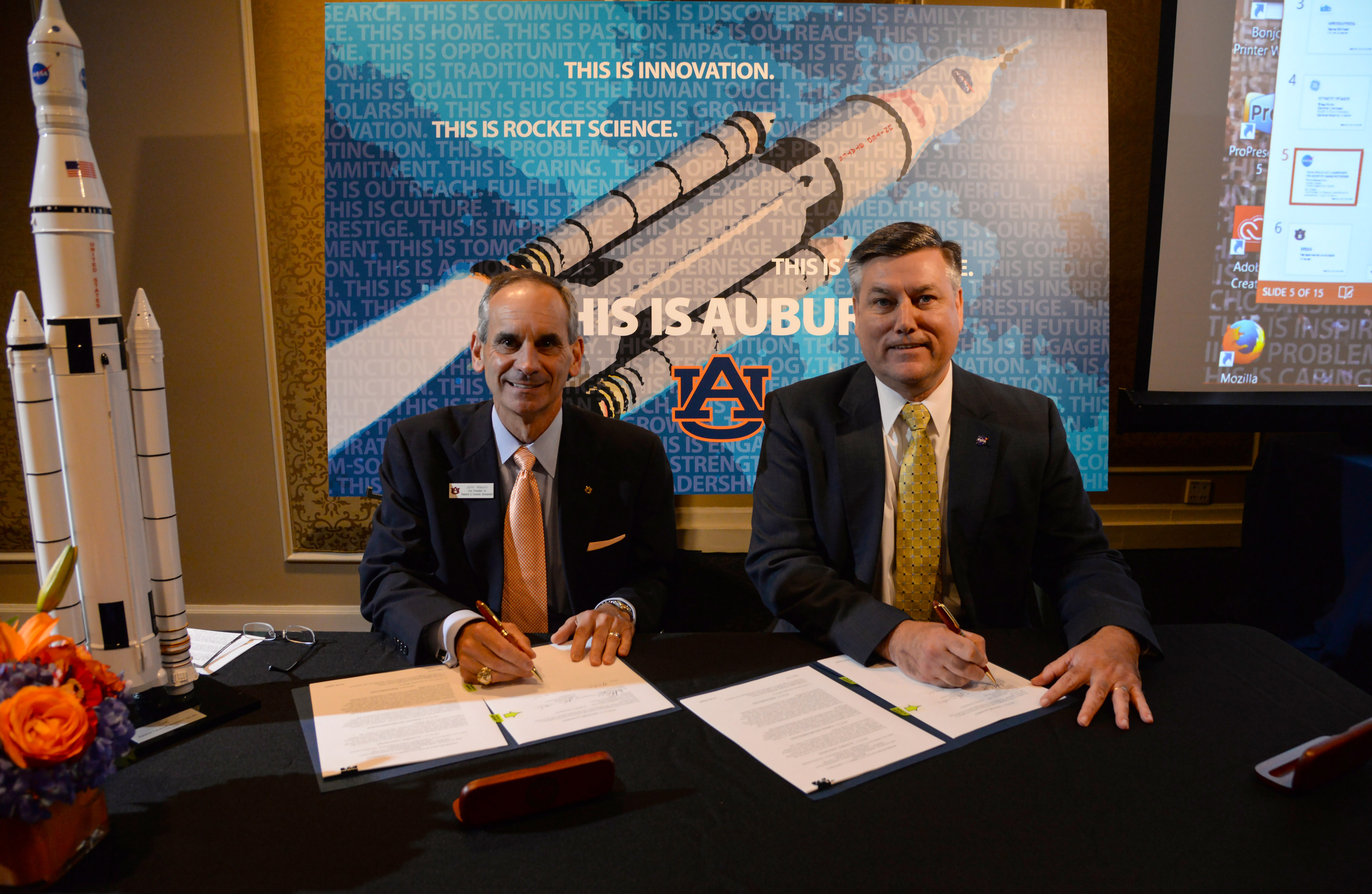
Categories: Auburn In the News, Science, Technology, Engineering and Mathematics (STEM)
Auburn University celebrates Olympic Training Designation
Elite athletes from across the nation can now train and receive science-based assessments and personalized feedback from kinesiology experts at Auburn.
The College of Education unveiled signage on Sept. 25 marking Auburn University's official designation as a U.S. Olympic training site by the United States Olympic Committee, or USOC, following a ceremony at the School of Kinesiology. Auburn is one of 18 Olympic training sites in the country and one of only five universities nationwide to receive the designation.
The Kinesiology Building, Beard-Eaves-Memorial Coliseum and Watson Fieldhouse were designated U.S. Olympic training sites as the university assists Team USA on its journey to the 2016 Rio de Janiero Olympic Games.
"USA Team Handball is one that competes at the highest level in the Pan American Games and Olympic Games," said retired Brig. Gen. Harvey Schiller, president of USA Team Handball and USOC representative. "I think it's a unique opportunity for the community and the university to have an Olympic sport housed in its environment."
The ceremony, which was hosted in conjunction with the College of Education's centennial anniversary celebration and the Auburn University Board of Trustees' quarterly meeting, included remarks from Jay Gogue, Auburn University president; Betty Lou Whitford, dean of the College of Education; David Benedict, chief operating officer for Auburn University Athletics; Schiller; Sarah Gascon, doctoral candidate in the School of Kinesiology; Sarah Newton, member of the Auburn University Board of Trustees; and Dave Pascoe, a Humana-Germany-Sherman Distinguished Professor and the assistant director of the School of Kinesiology.
Administrators from the university and USA Team Handball, along with several athletes were also honored on Sept. 26 before the Auburn vs. Mississippi State football game.
"This designation brings together the recognizable logos of the USOC, Auburn University and USA Team Handball," said Pascoe. "People across the country will want to connect with this unique collaboration of spirit, science and top training facilities."
Since the summer of 2013, Auburn has hosted elite training and competition for the men's and women's USA national team handball programs.
The USA Team Handball members are also a part of a long-term residency program at Auburn through the School of Kinesiology. This program allows the school to provide expertise in assessment and performance of human movement, including biomechanics, basic and applied physiology, neuroscience, behavior, conditioning, health and motor learning and development.
"The Auburn School of Kinesiology has been instrumental in providing a new home for USA Team Handball athletes and we appreciate the support of the Auburn-Opelika community in welcoming our athletes and coaches," said Alicia McConnell, USOC director of training sites and community partnerships. "We look forward to a fruitful relationship with Auburn University as an official U.S. Olympic training site."
For more information about the United States Olympic Committee, go to www.teamusa.org. For more information about USA Team Handball, go to www.teamusa.org/USA-Team-Handball.
By: Sarah Phillips
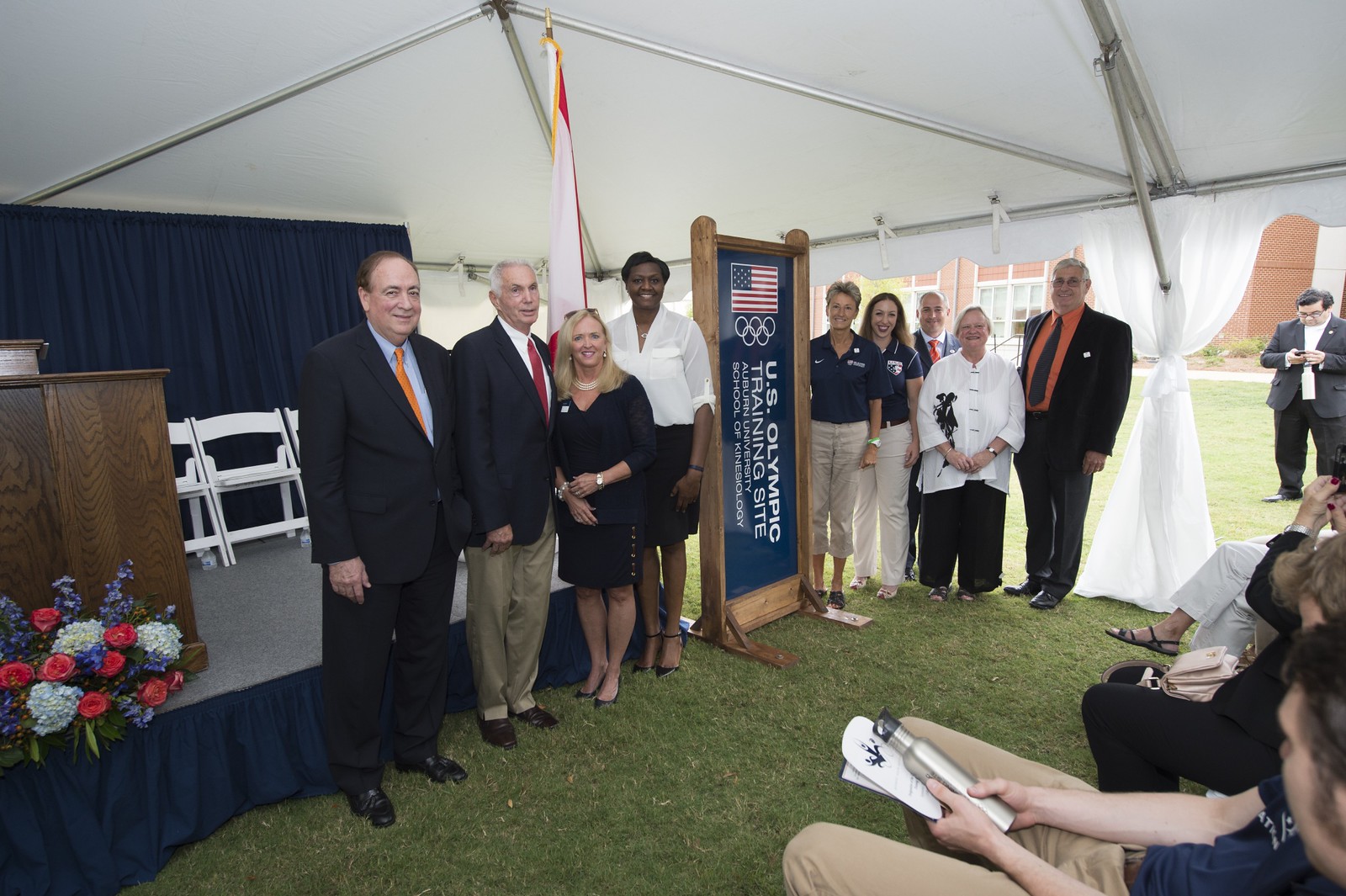
Categories: Auburn In the News, Health Sciences
Auburn University wins national Innovation and Economic Prosperity University award for economic development
Auburn University has won a top national Innovation and Economic Prosperity University award for its impact in economic development, announced today by the Association of Public and Land-grant Universities, or APLU. Auburn received the honor in the “place” category.
“This award is tremendous recognition for the university,” Auburn University Vice President for Research and Economic Development John Mason said. “We are establishing partnerships with highly innovative ventures to spur economic growth and benefit citizens throughout the state and region. These relationships provide our students with learning experiences, while companies and organizations benefit from Auburn’s world-class faculty and research.”
The “place” award recognizes Auburn for excelling in community, social and cultural development work. Auburn’s application for the award highlighted three programs: the Auburn University Rural Studio, the National Poultry Technology Center and the off-bottom oyster farming initiative at the Auburn University Shellfish Lab.
“Understanding local culture and social norms, workforce needs and public priorities is critical to providing communities with tools needed to prosper,” Mason said.
The Rural Studio, part of the College of Architecture Design and Construction, affords students the opportunity to apply their skills as designers while also learning about the nature, history, culture, economy, architecture and community in the unique educational landscape that is rural West Alabama. There, student projects serve to cultivate local business and social networks, as well as create spaces for gathering, recreation and entertainment.
In Alabama and across the U.S., the National Poultry Technology Center works hand-in-hand with poultry growers and industry to improve the bottom-line profitability and quality of poultry production by providing timely applied research and education in housing, equipment, energy and environmental controls.
The Auburn University Shellfish Laboratory on the Dauphin Island provides instruction, research and outreach in the area of shellfish ecology and production. Through their efforts, a 32-acre oyster farm “business park” along with hands-on training programs where participants establish commercial oyster farms on site has been established in Portersville Bay, Alabama.
Auburn had an overall $5.1 billion economic impact on the state economy in 2014 and created 23,600 jobs, in addition to direct employment, according to a recent self-study.
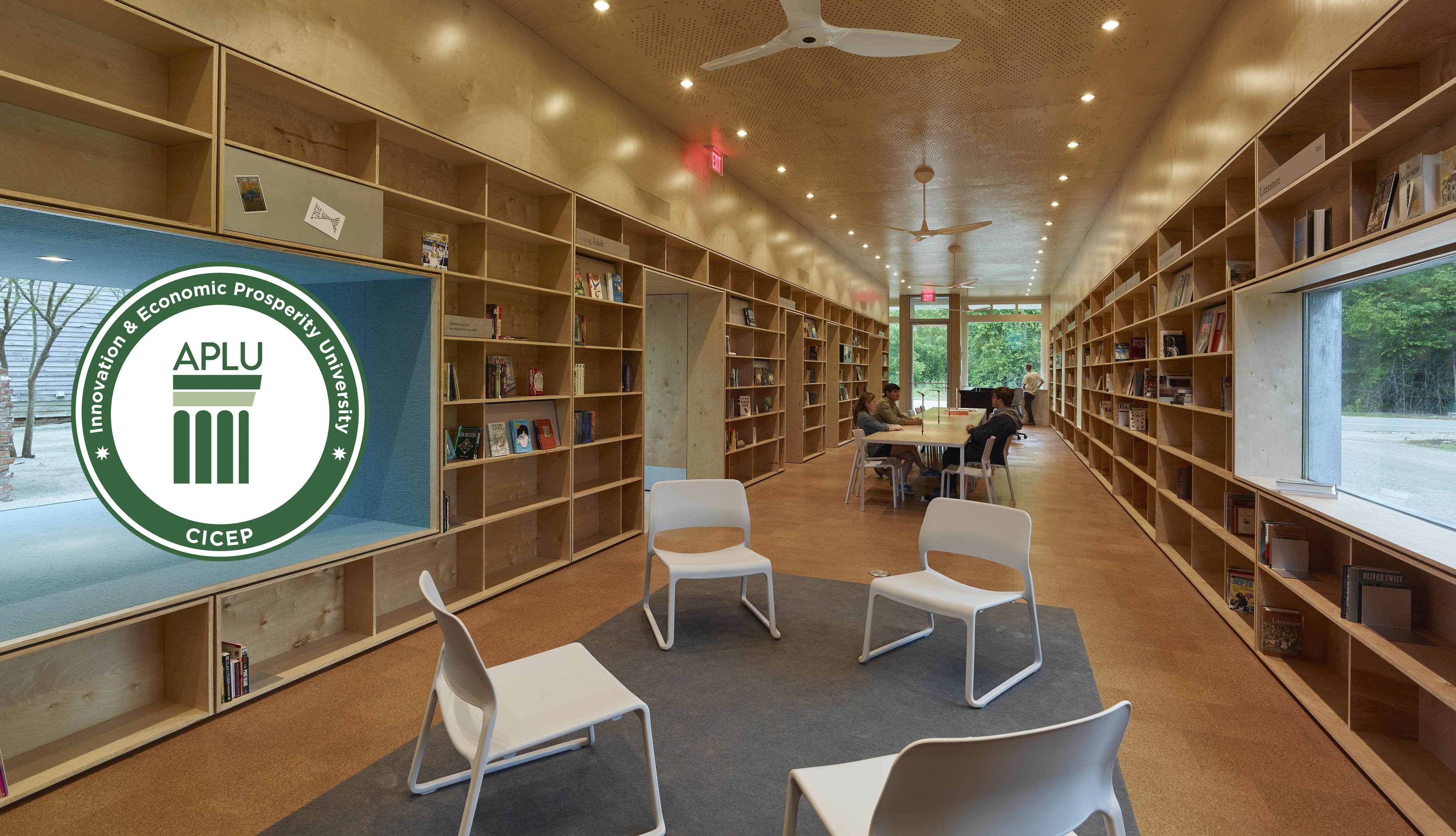
Categories: Auburn In the News
Sequencing of Catfish Genome Detailed in Nature Communications
The sequencing of the channel catfish genome—considered one of the major milestones in the annals of Auburn University research—has been detailed in an article published in the June 2 issue of Nature Communications, an international multidisciplinary journal.
“This project represents eight years of work, with the collaboration of more than 50 scientists,” said Zhanjiang (John) Liu, associate provost and associate vice president for research at Auburn University and professor in the College of Agriculture’s School of Fisheries, Aquaculture and Aquatic Sciences.
The project is significant for many reasons, Liu said, including the sheer magnitude of the work.
“It is the first catfish genome sequence in the world, and the catfish has approximately 4,100 species,” he said.
The research also is a good model of university and government collaboration, with Auburn leading the project and significant contributions from USDA-ARS in Mississippi, he said.
It also allows scientists who work with catfish to focus their research in other areas and rely on the DNA map provided by the project as a primary resource.
“This resource is now available by simply searching the GenBank, and that saves a tremendous amount of labor for scientists,” said Liu, who has led the catfish genome sequencing project since its inception.
The research actually included the sequencing of three fish genomes—a channel catfish and two South American scaled catfish species.
“This allowed us to compare scaled fish versus non-scaled fish to determine which genes are responsible for the loss of scales from channel catfish,” Liu said. “That is very important in terms of basic biology. But more importantly, the whole genome sequence will allow us to do very efficient genetic selection using molecular genomic information for aquaculture.”
The project is important to the future economic health of the U.S. catfish industry because every trait is controlled by the genome, he said.
“Whether we are talking about growth rate, disease resistance, low-oxygen tolerance or feed conversion efficiency, all of those traits are coded in the genome,” Liu said. “When we have the whole genome sequence, then we can use it as a template to determine the genomic locations for genes that control performance traits and then select for fish with good genes”
Top-performing breeds are essential, he said, if the catfish industry in Alabama and nationwide is to remain economically viable in the face of soaring feed, energy and fuels costs, low farm-gate prices and increased competition from overseas imports.
Genetics, Liu said, is the most important element in fish production.
“For example, if you have a disease-resistant fish, then you don’t have to worry about antibiotics and other treatments,” he said. “Among all approaches, genetics is perhaps the most effective at fixing a problem, whether it is to make the fish grow faster, make it resistant to diseases, or make it tolerant to low oxygen. If we understand the genome and the genes responsible for those traits, we can provide very effective selection for the industry.”
Applying genome mapping to the catfish breeding process is very close to becoming a reality, he said.
“We now know which markers designate a fish as a male or female, and similarly, by using molecular markers for other traits, we can determine if the fish is good for other traits. It will take additional work, and we’re not ready yet, but based on the genome information we now have, we can rapidly map where the genomic regions are located that control various traits.”
He believes genome mapping will enable the breeding of a “super fish” that will possess the most desirable traits.
“It requires a lot of collaboration between the research community and the industry, but if we all work together, we’ll see major progress toward the practical application of this research in the next three to five years,” Liu said.
While work is completed for the genome sequencing of the channel catfish, it continues on the blue catfish.
“The catfish industry is now dominated by channel catfish/blue catfish hybrids,” Liu said. “We should be finishing this genome within the next year.”
The Nature Communications article can be viewed at http://www.nature.com/ncomms/2016/160602/ncomms11757/full/ncomms11757.html
by PAUL HOLLIS
Categories: Auburn In the News, Energy & the Environment
Knowledge-based industries crucial to Alabama's economic future
By John M. Mason Jr., vice president for research and economic development at Auburn University and president of the Auburn Research and Technology Foundation.
The state of Alabama has welcomed and benefited from new industries over the decades and now looks forward to the knowledge-based economy of tomorrow. To maximize our potential, it's incumbent that we invest in our workforce and nurture government, business and industry partnerships, especially those in sectors building upon advanced technologies and new ideas.
For many years, state and local economic development programs relied on offering tax breaks and other incentives in a sort of arms race to see who could give the most generous package. While financial incentives have their place, our future as local communities and as a state rests on enhancing investments in three economic pillars--a trained workforce, new technologies and entrepreneurship-- as the recipe for a sustained, secure and prosperous future.
Invest in our workforce
The immense ability of our state's educational institutions to provide impactful research and a workforce able to fulfill the promise of next-generation technologies is undeniable and appealing, nationally and globally. More strategically focused partnerships among four-year universities and the Alabama Community College System will ensure we can supply high-tech companies with a talented workforce.
Technical institutes offering credentialing and certificate programs in partnership with higher education represent another avenue. For example, the Auburn Research and Technology Foundation is working with the City of Auburn, Auburn University, the Alabama Community College System and commercial partners on creating technology credentialing, training and research and development in emerging manufacturing technologies, advanced computer numeric control operations and tool and die design. The goal is an advanced workforce capable of meeting the increasing technological needs of current industries in the state and others considering locating here where industry startup training is an attractive incentive.
Bringing more industry and training to all parts of Alabama will help communities move forward. An educated, highly capable workforce will propel our efforts to attract knowledge-based industries and enhance those already in the state.
Invest in knowledge-based technology
Our nation is looking for next-generation technologies in areas like sensitive cyber security, additive manufacturing, health sciences, military defense, agriculture and bioscience systems, robotics and radio frequency identification. Knowledge-based industries in these associated fields represent the type of companies that will stay in the U.S. to better protect their respective proprietary and intellectual property.
An excellent tool for recruiting industries of the future and expanding existing ones is the Alabama Science and Technology Roadmap, developed as part of Accelerate Alabama 2.0, which updates the state's strategic economic development growth plans. It identifies science and technology capabilities at Alabama universities and research institutes and matches this expertise to targeted business sectors. This will help enhance and expand Alabama's infrastructure and resources needed to ensure the state is nationally and internationally competitive.
Auburn, like many state institutions, focuses on knowledge-based technologies. We collaborate with partners such as GE Aviation, which brought high-volume additive manufacturing to its facility in the City of Auburn, and the HudsonAlpha Institute for Biotechnology in Huntsville, working with our College of Veterinary Medicine and others to identify genes associated with cancer, cardiovascular diseases and obesity. On campus, our Samuel Ginn College of Engineering is tasked with helping protect the cyber security of our nation's infrastructure through the Charles D. McCrary Institute, founded through an Alabama Power Foundation donation in honor of its former CEO and an Auburn alumnus.
Invest in our entrepreneurs
Supporting an idea that seemed far-fetched a few years ago could lead to an industry of the future. A community will thrive with entrepreneurs and a collection of small, knowledge-based companies, each with 25 to 100 well-paying jobs.
An exemplary program is Alabama Launchpad, part of the Economic Development Partnership of Alabama, that promotes and rewards high-growth, innovative startup companies from across Alabama. The competition is for startups that need additional capital to launch their business as they compete for cash grants.
At Auburn we have created LAUNCH to help faculty bridge the gap between innovative research and the marketplace. One project that could impact the healthcare industry involves the production of antimicrobial wound dressings with the hope of reducing the occurrence of dangerous infections and enhancing wound healing. This spring, our Raymond J. Harbert College of Business will host its third annual Entrepreneur Summit March 30-31 featuring the Tiger Cage competition, similar to ABC's popular "Shark Tank" show, for student entrepreneurs.
Providing more opportunities at the state and local levels will help attract and empower startup companies.
Auburn and its partners work diligently to strategically position our community and state for growth in the knowledge-based economy of tomorrow. Our local partnership received accolades in a recent Wall Street Journal article spotlighting college towns and their economic resilience to overcome job losses from vanishing industries and overseas competition.
Collaboration on knowledge-based technologies among four-year universities, community colleges, government officials, local authorities and industry partners will usher in the next phase of economic growth and innovation in Alabama.
Categories: Auburn In the News, External Engagement, OVPRED
GE Aviation readies first 3-D printed jet engine nozzle at Alabama plant, partners with Auburn University
The Alabama Departmentment of Commerce recently featured GE Aviation's Auburn plant in its online news center:
AUBURN, Alabama — GE Aviation is turning its facility in Auburn into the world’s first factory for 3-D printed jet engine fuel nozzles, landing the Alabama plant a starring role in a technology that promises to revolutionize aerospace manufacturing.
GE Aviation, one of the world’s top aircraft engine producers, announced plans to introduce high-volume production of the fuel nozzle using additive manufacturing in Auburn at last year’s Farnborough International Airshow. The company said the $50 million project would make the Alabama plant the first to mass produce 3-D printed components for the jet propulsion industry.
Since arriving in Alabama, the company has begun developing ties to Auburn University, which is seen as a potential talent pipeline for the facility. “We continue working with Auburn University around technology, student activities, and recruiting, and the partnership continues to grow,” Markiewicz said.
To read the full article, visit: http://www.madeinalabama.com/2015/06/ge-aviation-readies-first-3-d-printed-jet-engine-nozzle/
Categories: Auburn In the News
Auburn University featured in IEP Case Study Library
At the beginning of July, the Innovation and Economic Prosperity Universities Program, part of the Association of Public and Land-Grant Universities, created an IEP Case Study Library that allows interested parties to learn about and from designee economic development projects provided in awards submissions. As both a designee and an award winner in the "Place" category, Auburn University's case studies are currently featured there. Case studies include information on the Rural Studio, the National Poultry Technology Center, and the Off-Bottom Oyster Farming efforts at the Auburn University Shellfish Lab. To learn more, visit the IEP Case Study Library.
Categories: Auburn In the News, Energy & the Environment, Food Systems
Auburn-led pioneering study in 'Nature' reveals human-induced greenhouse gas emissions from the land biosphere contribute to climate change
An Auburn University professor says human-induced methane and nitrous oxide gas emissions overwhelm terrestrial carbon dioxide uptake—contributing to climate change—and thus should be reduced to alleviate the problem, according to a study published in the March 10 issue of the scientific journal, Nature.
Hanqin Tian, director of the International Center for Climate and Global Change Research in Auburn's School of Forestry and Wildlife Sciences, is the lead author of "The terrestrial biosphere as a net source of greenhouse gases to the atmosphere." His Auburn colleagues, Assistant Professor Shufen Pan, research fellow Jia Yang, graduate student Bowen Zhang and former research fellow Chaoqun Lu, now an assistant professor at Iowa State University, served as co-authors among an international research team of 23 scientists from 16 institutions in four countries.
Nature is widely regarded as the world's most highly cited interdisciplinary science journal.
"This study for the first time, to the best of our knowledge, examined the net balance of three major greenhouse gases of carbon dioxide, methane and nitrous oxide in the land biosphere and the contribution of human activities during the past three decades," said Tian, who serves as the Solon and Martha Dixon Professor and Alumni Professor at Auburn.
The terrestrial biosphere plays a critical role in the global carbon cycle and is commonly recognized as a carbon sink, which means to sequester atmospheric carbon dioxide and hence mitigate climate change. But the human transformation of the land biosphere also caused a large amount of methane and nitrous oxide emissions. From both science and climate policy perspectives, he says it is of critical important to concurrently estimate the overall balance of the three major greenhouse gases in the land biosphere.
"The global warming potential of methane and nitrous oxide are 28 and 265 times larger than that of carbon dioxide, respectively," Tian said. "We analyzed and synthesized the state-of-the-art estimates of biogenic fluxes of these three gases at global and regional scales to better understand the climate-ecosystem feedback and effectively mitigate climate change. The net balance of human-induced greenhouse gases could to some extent reflect the role of the land biosphere in shaping the climate system."
The researchers found that the cumulative warming capacity of concurrent methane and nitrous oxide emissions is a factor of about two times larger than the cooling effect of the global land carbon dioxide uptake, based on the global warming potential on a 100-year time horizon.
"This finding reveals for the first time that human activities have transformed the land biosphere to act as a contributor to climate change," Tian said.
The study also finds that human-caused biogenic fluxes of these gases in Southern Asia, a region including China and India, led to a larger net climate warming effect, compared to other regions. A major source of human-caused methane emission comes from rice cultivation and livestock, while a major source of nitrous oxide is from the use of manmade fertilizers.
Co-author Anna Michalak of Carnegie Institution for Science in Stanford, California, said, "Here we bring together information from dozens of sources to show that human actions, on a global scale, have caused the world's plants, animals and microbes to contribute to global warming."
Tian added, "We suggest that adoption of best practices by policymakers and landowners to reduce greenhouse emissions from human-impacted land ecosystems could reverse the biosphere's current warming role."
Fellow co-authors echo the impact of the research results.
"This study is an excellent example of science in the service of society," said Jerry Melillo, who serves as chairman of the U.S. National Climate Assessment committee and holds the rank of distinguished scientist at the Marine Biological Laboratory in Woods Hole, Massachusetts. "Its rigorous analysis of the fluxes between the land and the atmosphere of three major heat-trapping gases does two things. It highlights the role of land management across the globe in driving climate change and it identifies land-management actions that can become part of a climate mitigation strategy."
"This study is the first-ever global synthesis of emissions and sinks for each region of the globe, and the three main greenhouse gases affecting climate change," said Philippe Ciais, who serves as convening lead author for the fifth assessment report of the Intergovernmental Panel on Climate Change, or IPCC, and associate director of the Laboratoire des Sciences du Climat et de l'Environnement in France. "Its strength is that the greenhouse gas fluxes estimates from ecosystem models are verified by independent atmospheric concentration measurements in atmospheric inversion."
Josep Canadell, executive director of the Global Carbon Project in Australia, added, "The results are a big wake-up call for the global climate community that show the way we are managing our lands is not sustainable and not consistent with stabilizing the climate at low temperature scenarios. How we manage the global lands needs to become a central part in our strategy to mitigate global warming."
The article is available on the Nature website, http://www.nature.com/. More information about Auburn University's International Center for Climate and Global Change Research is available online at http://wp.auburn.edu/cgc.
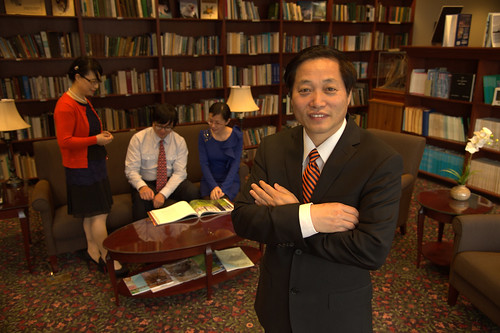
Categories: Auburn In the News, Energy & the Environment
Auburn’s new ‘This is Research: Faculty Symposium 2015’ set for Sept. 30
AUBURN UNIVERSITY -- Auburn University will launch its new “This is Research: Faculty Symposium 2015” Sept. 30 at The Hotel at Auburn University and Dixon Conference Center to recognize research excellence of Auburn and Auburn Montgomery faculty.
“Our researchers are world class and do great work,” said John Mason, Auburn University vice president for research and economic development. “This symposium is a great way to bring them together and showcase their work.”
The event is also designed to provide a forum for collaboration, offer information about support offices on campus and increase the visibility of Auburn research to external constituencies, such as advisory board members, representatives from industry and foundations as well as community members.
“The morning sessions will bring together researchers with common interests,” said Jennifer Kerpelman, chair of the This is Research Symposia Committee. “We want to initiate opportunities for researchers to continue to make connections during the upcoming year.”
Three-minute, morning lightning presentations will cover cyber, energy, health disparities, military-related research, SENCER, applied design, STEM education, climate-earth systems, digital applications, fMRI research, nano-bio research, omics and informatics, data management and visual and literary arts.
A morning research expo will provide information about key research support offices on campus.
“The sessions are designed to increase visibility to both internal and external audiences,” Kerpelman said. “We will have Auburn Talks, posters sessions and opportunities for one-on-one conversations with researchers.”
Fourteen Auburn researchers from across campus will present 10-minute Auburn Talks about their work. The list of presenters and titles is available on the This is Research website (https://cws.auburn.edu/OVPR/pm/thisisresearch/auburntalks).
The afternoon will also have one-on-one sessions to allow attendees to visit with researchers in areas of health, energy, environment, cyber and technology. Another afternoon session will have updates from directors of Auburn’s institutes, centers and initiatives.
The evening portion of the program will include the presentation of the Auburn University Research Advisory Board’s Advancement of Research and Scholarship Achievement Award, followed by the keynote address by Lt. Gen. Steven Kwast, commander and president of Air University at Maxwell Air Force Base in Montgomery. A reception for all attendees will conclude the event.
The “This is Research: Faculty Symposium 2015” is one of two This is Research symposia scheduled this school year. A spring event, “This is Research: Student Symposium 2016,” will be held in April in the Student Center. The two symposia replace the former Research Week which concurrently showcased faculty and student research.
In 2016 a biennial part of the faculty symposium, “Showcasing the Work of Creative Scholarship,” will debut with feature exhibitions and performances.
More details on the 2015 symposia are available on the This is Research website at www.auburn.edu/thisisresearch. For more information, contact Jennifer Kerpelman at kerpejl@auburn.edu.
Categories: Auburn In the News
Auburn University agreement opens door with Korean automotive industry
Auburn University President Jay Gogue has signed a memorandum of understanding with Youngsoo Lee, president of KITECH, to formalize the joint research efforts of Auburn's faculty and labs with local companies supported by KITECH.
The Korea Institute of Technology, or KITECH, recently documented collaboration in research and technology development with Auburn University to support the Korean automotive industry. Established in 1989, KITECH is a government funded research and development institute headquartered in Cheonan, South Korea, with several research centers in Korea, as well as international cooperation centers in China, Vietnam, Indonesia, Germany and Santa Clara, California.
"This signing creates a portal for Auburn University that facilitates our collaboration with the local automotive industry, the parent companies in Korea and the Korean government," said Andy Gillespie, Auburn University assistant provost for international programs. "Our King Sejong Institute, in partnership with Keimyung University, is our cultural bridge to Alabama's Korean and American communities, and our new relationship with KITECH will become our technical bridge, building on recent efforts by a number of Auburn's colleges and offices."
Other visitors present at the signing were Byung-Wook Choi, director of the KITECH USA Technology Cooperation Center; Sangkug Lee, director of the International Cooperation Department; Minjin Kim, researcher for the KITECH USA Technology Cooperation Center; and SangWoo Lee, administrator in the International Cooperation Department.
In 2014, the Office of University Outreach held a workshop for local companies supported by KITECH. With this declaration of a commitment to joint research, the Office of the Vice President for Research and Economic Development continue this collaboration with its involvement.
"There are over 60 Korean companies along the I85 Corridor between Montgomery and West Point, Georgia," said Larry Fillmer, executive director of the Department of External Engagement and Support. "This MOU provides a framework for collaboration among KITECH subject matter experts and Auburn faculty and researchers."
Throughout the last five years, Samuel Ginn College of Engineering professor Song-Yul 'Ben' Choe has been working with the Office of International Programs and KITECH to establish a regional office in Auburn for joint research and development efforts for the Korean automotive industry.
"Through supporting agreements, research projects, technical assistance, facilities and labs at Auburn may be shared to provide operational and manufacturing solutions to problems being encountered by Korean companies in our immediate region," said Fillmer. "In the future, KITECH may seek to establish an office and operations in the Auburn University Research Park."
Categories: Auburn In the News, Transportation, Engineering



